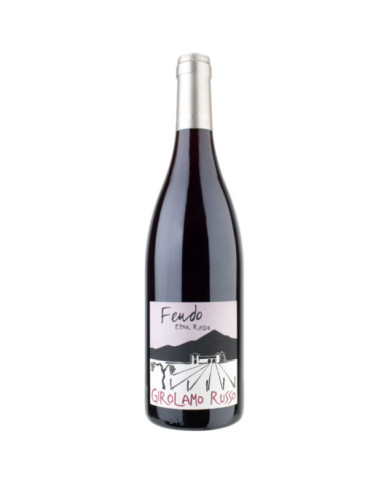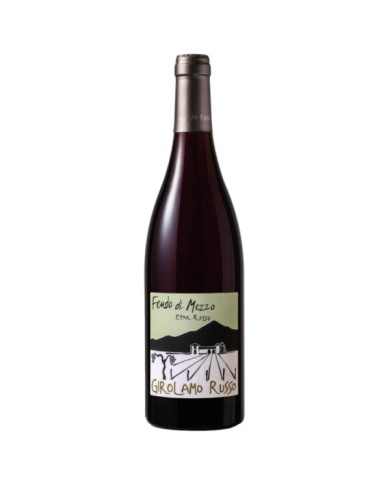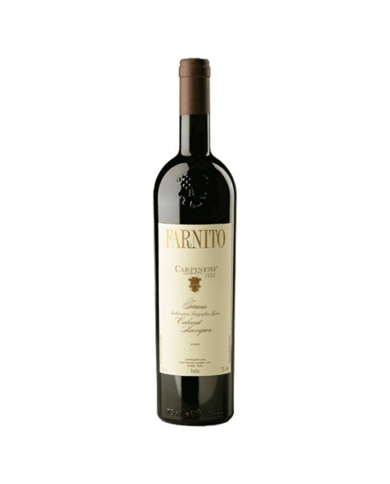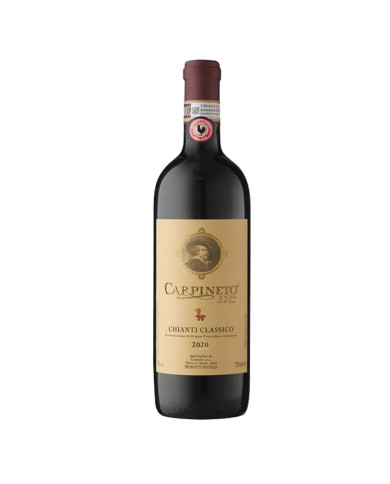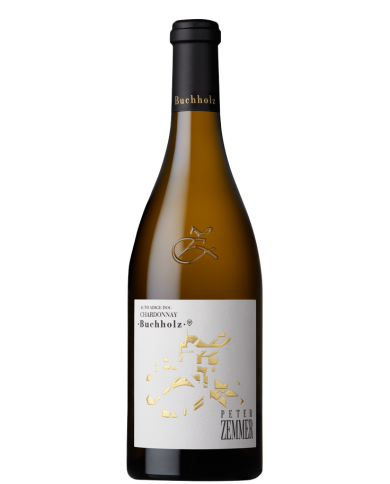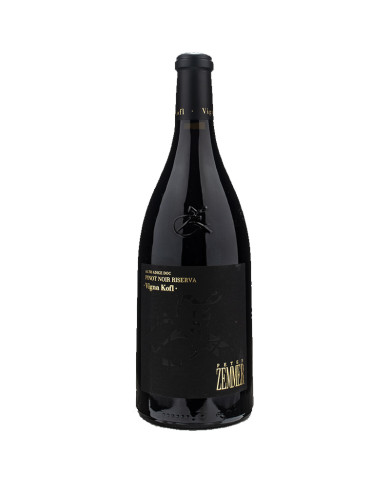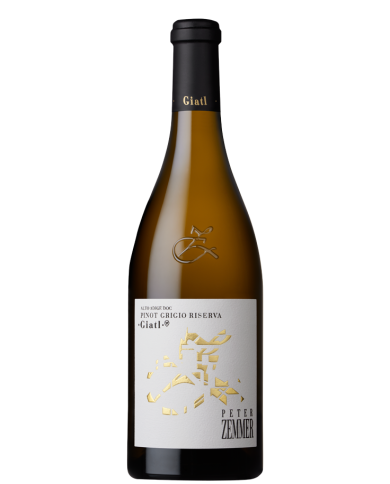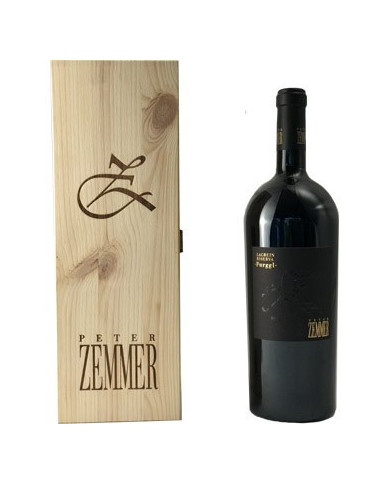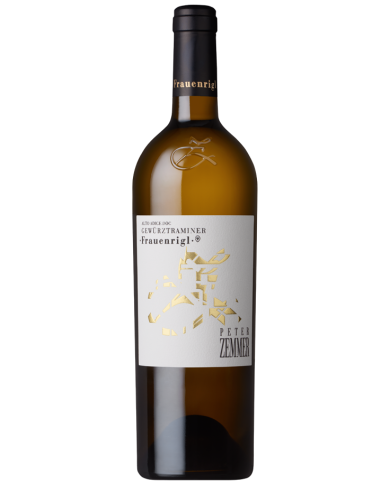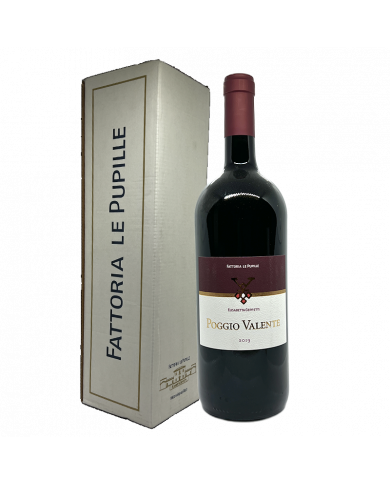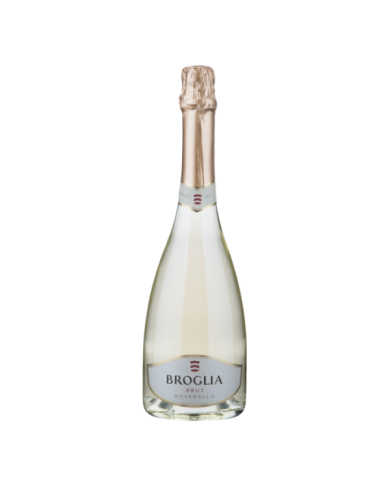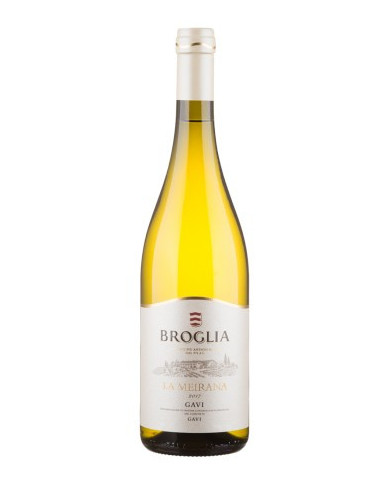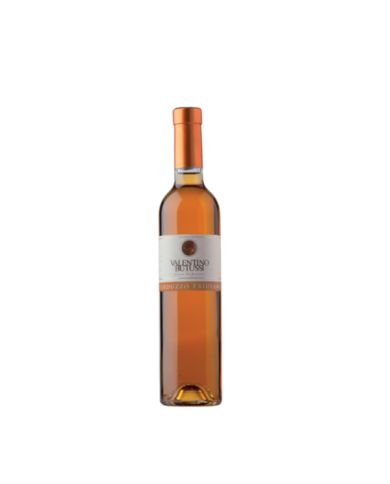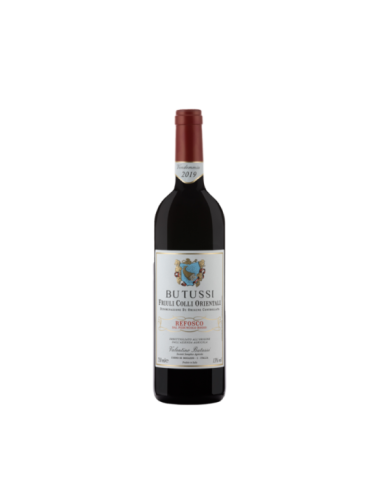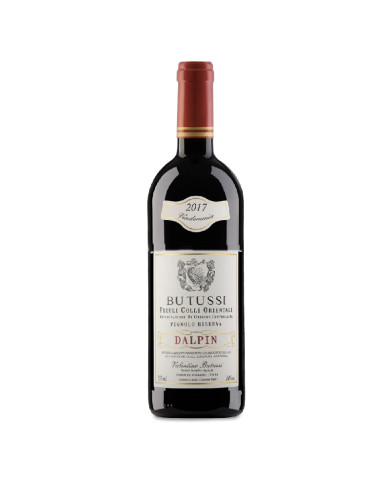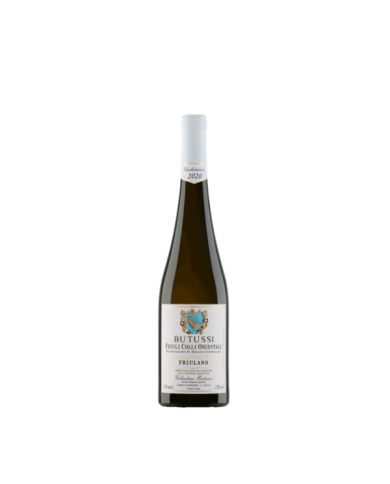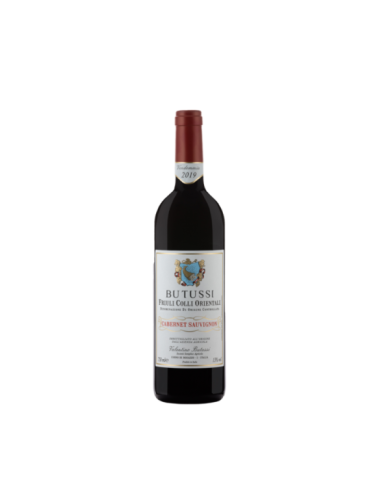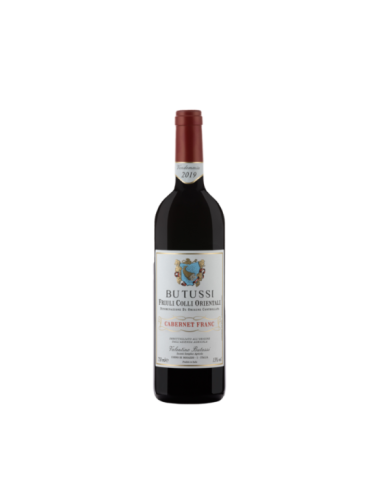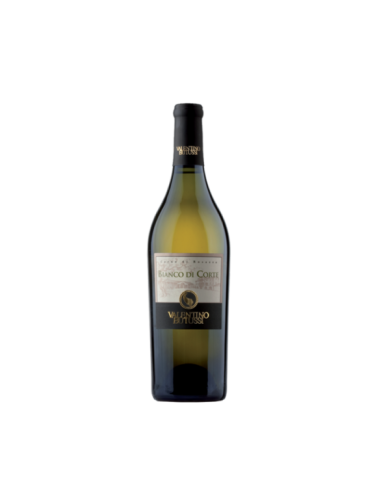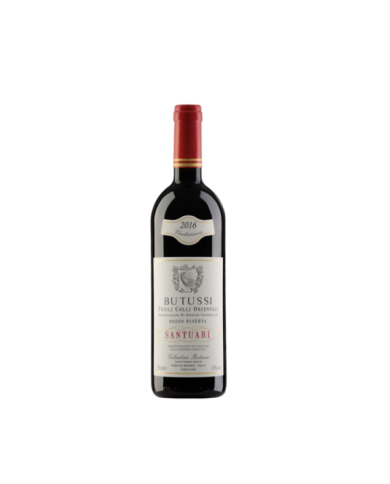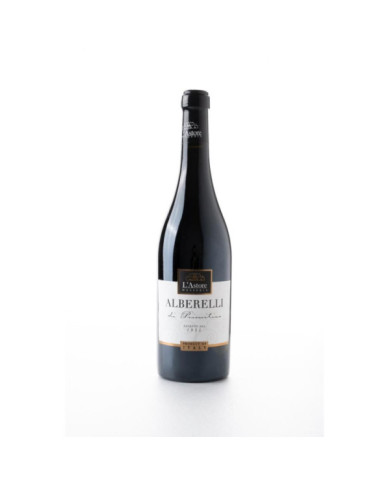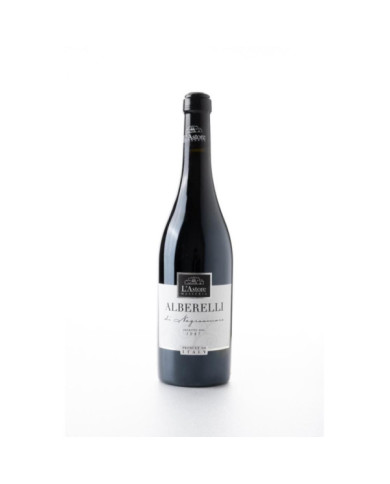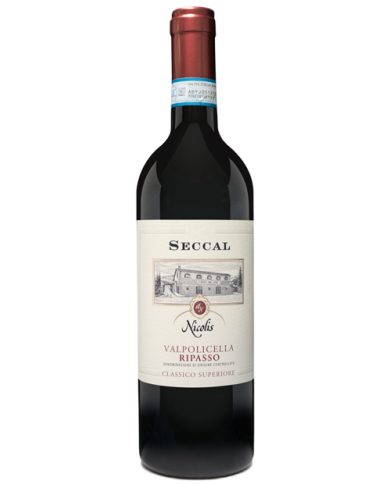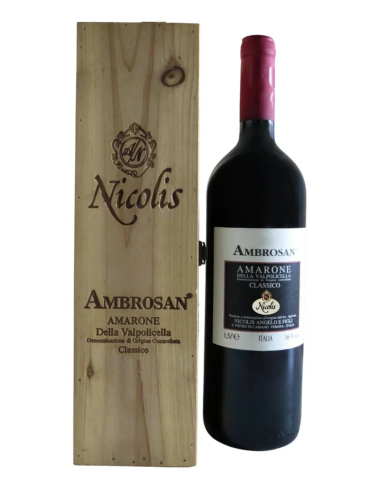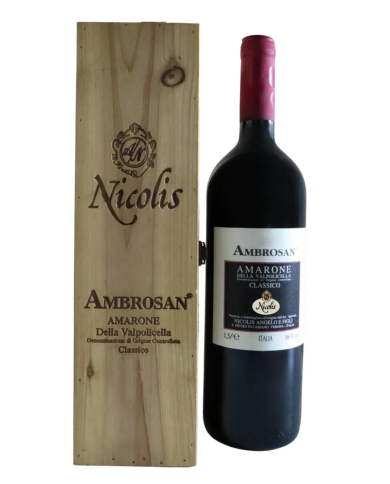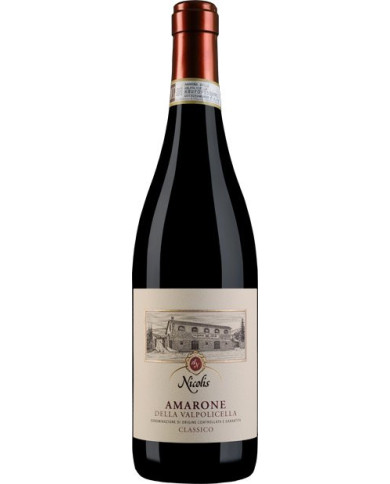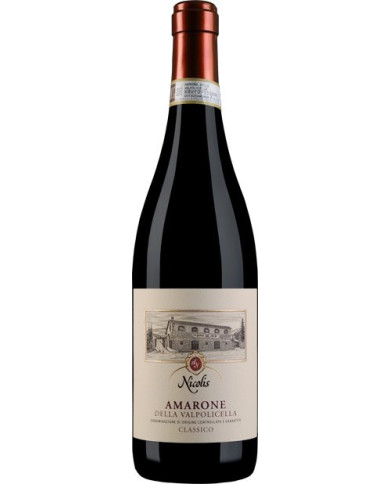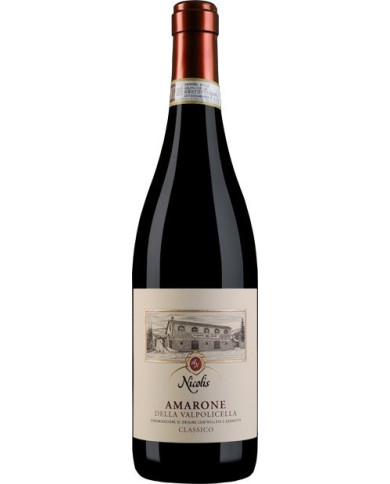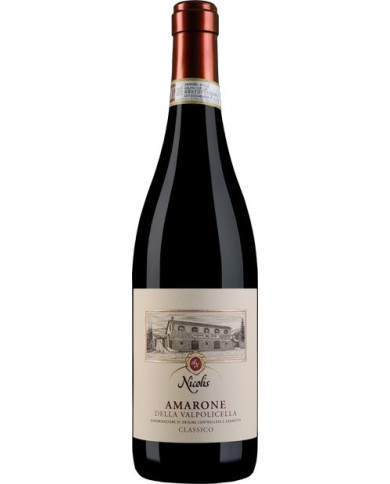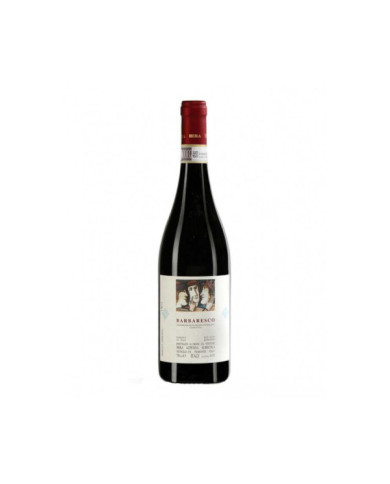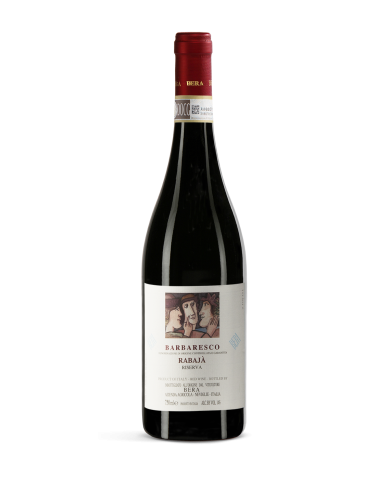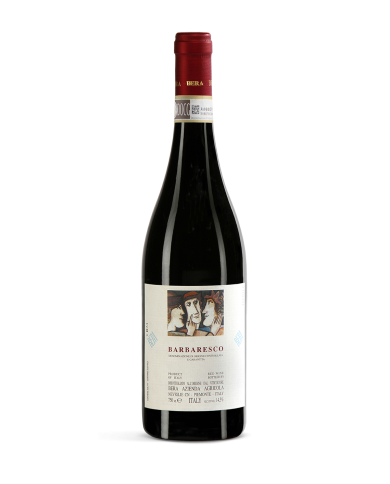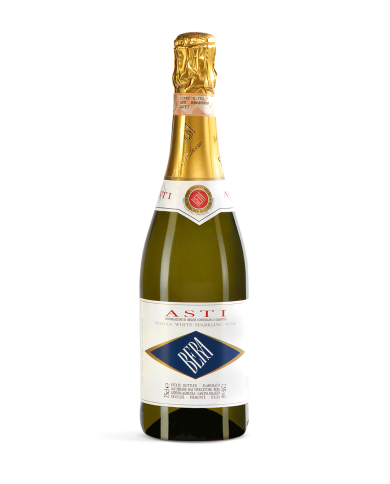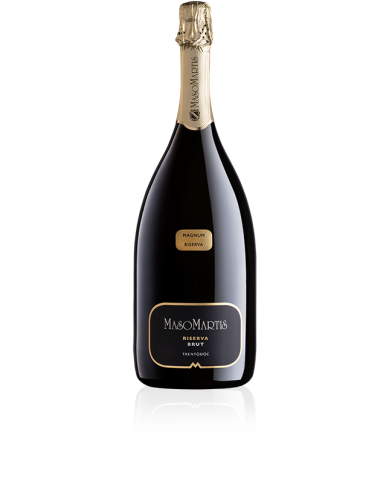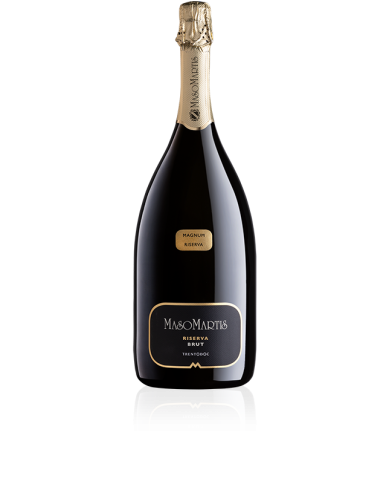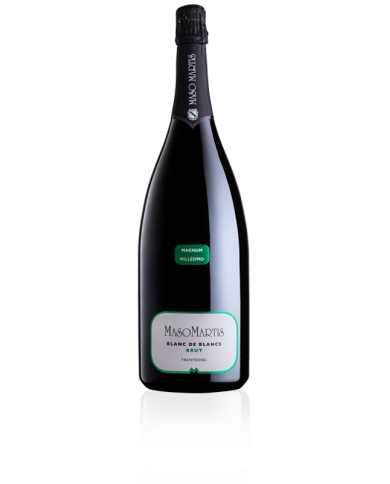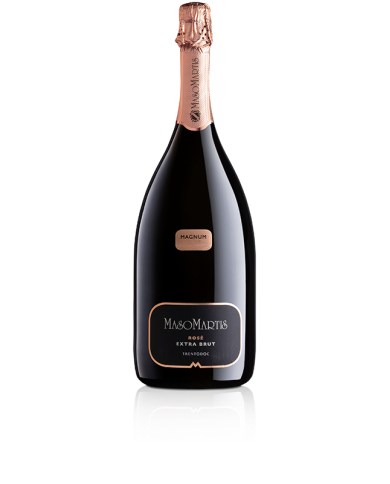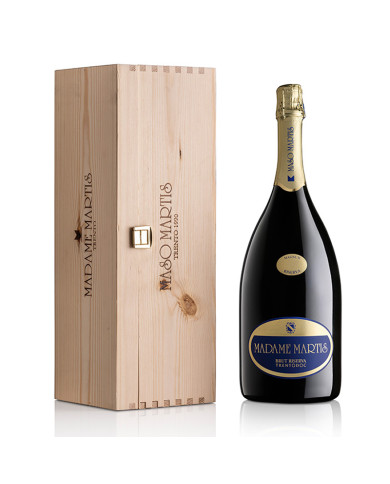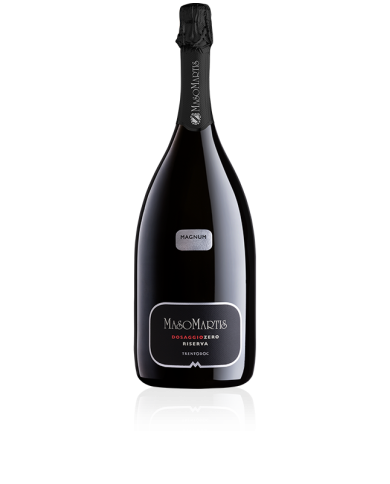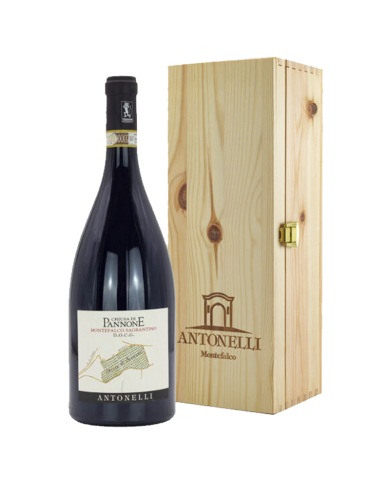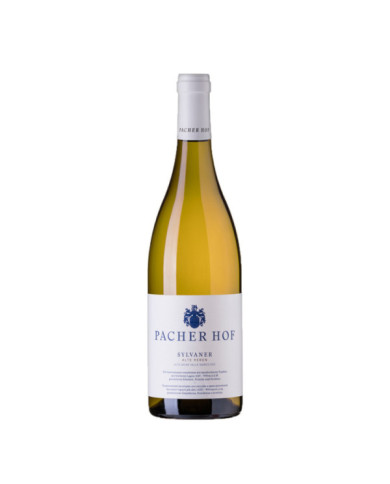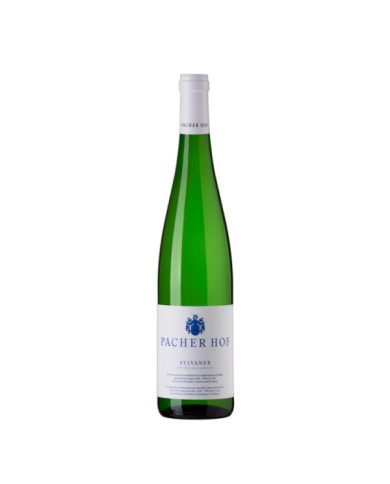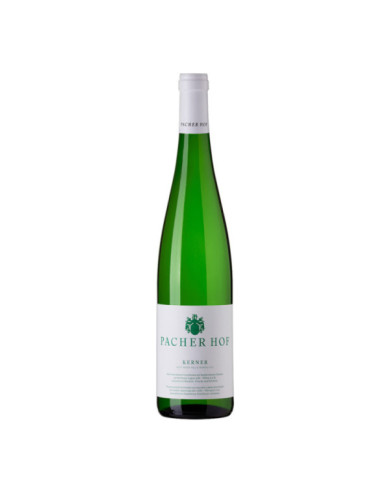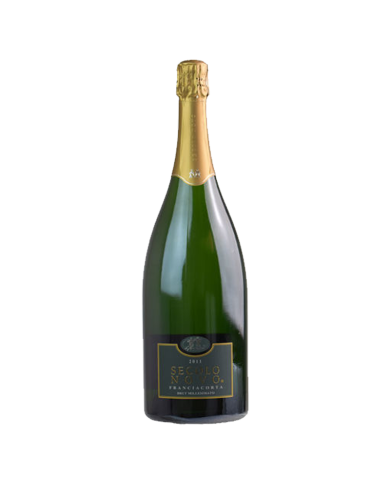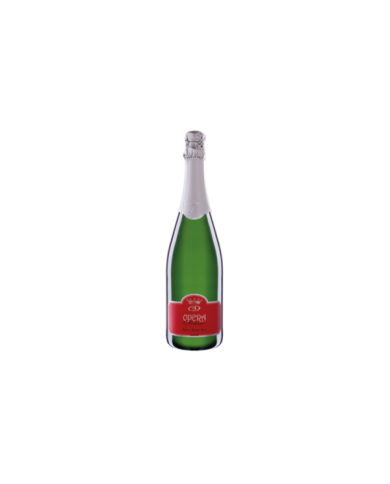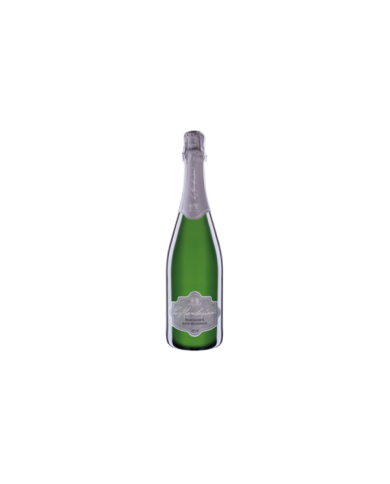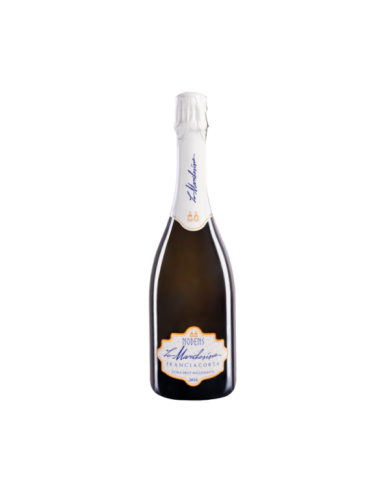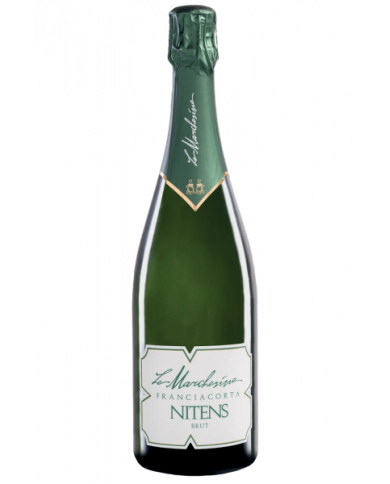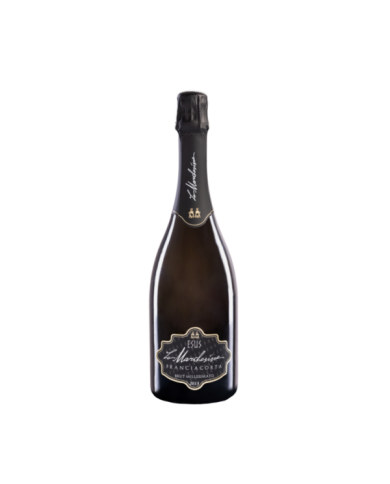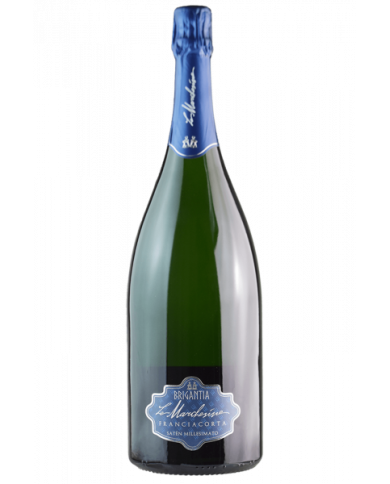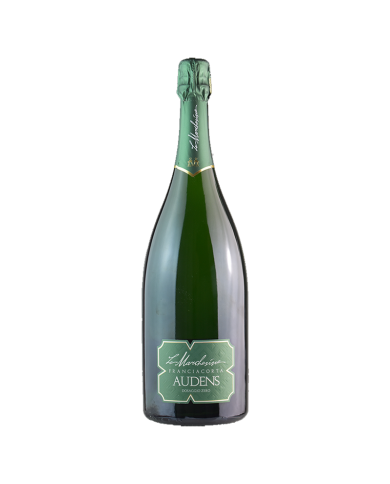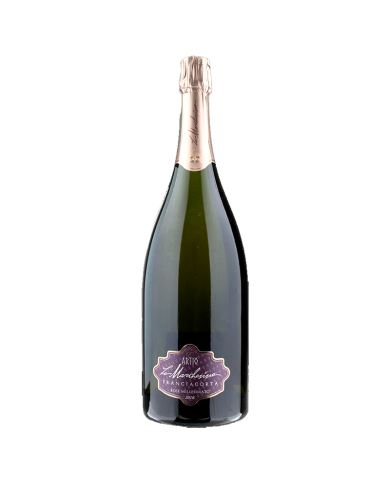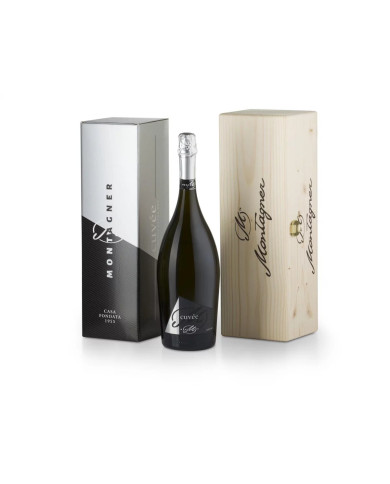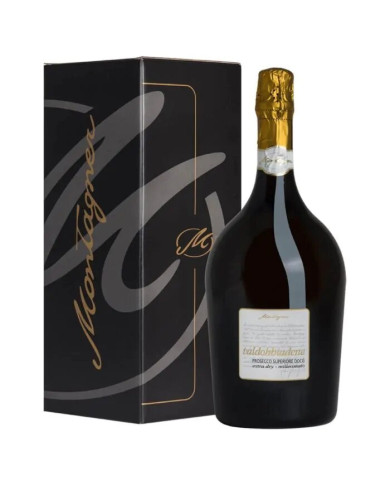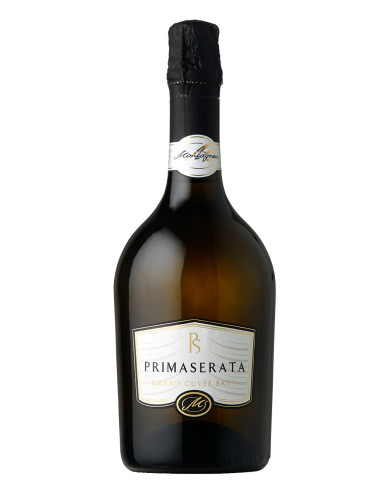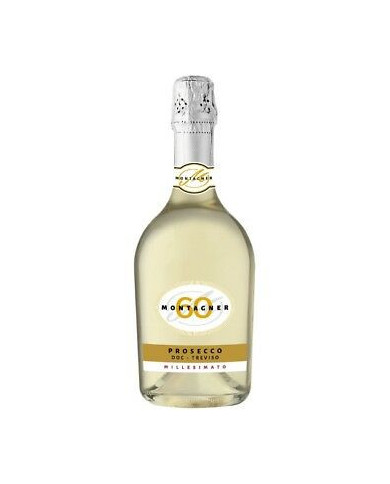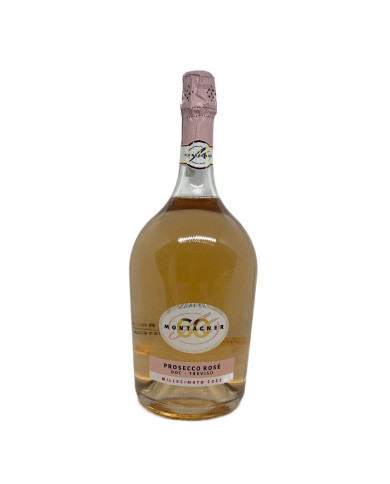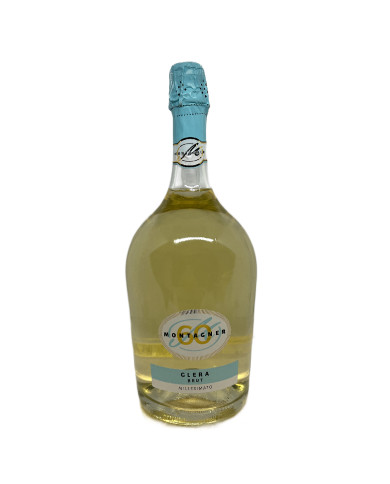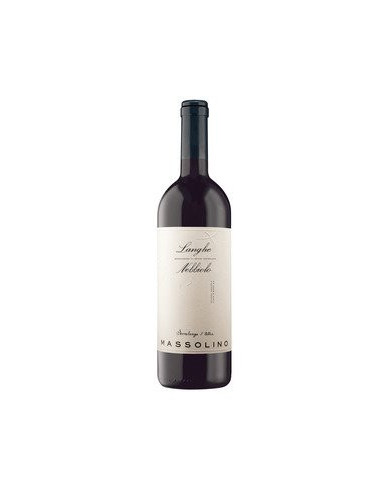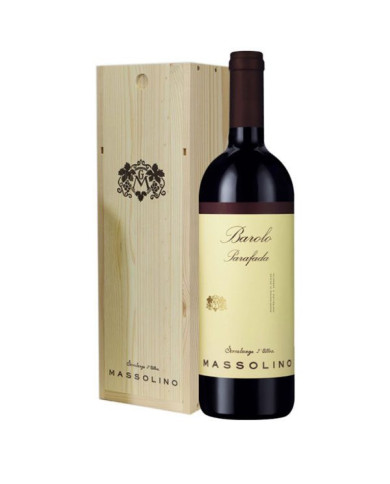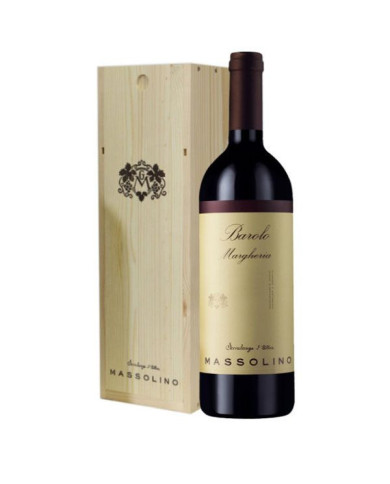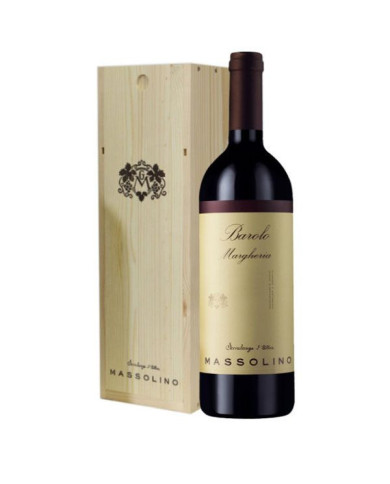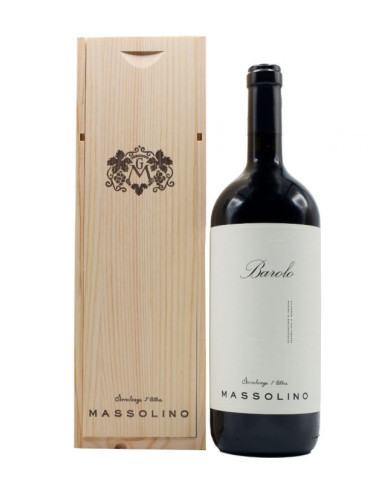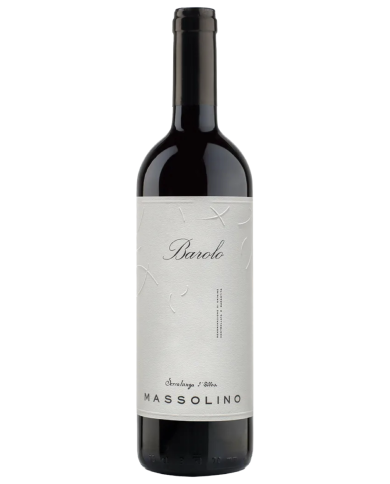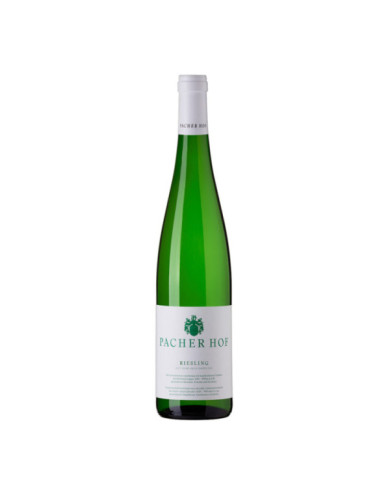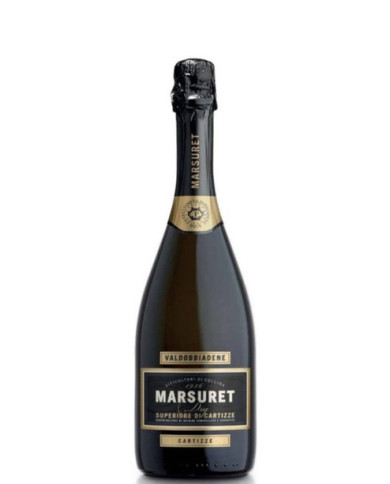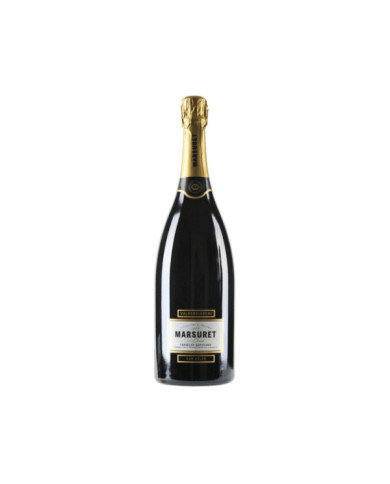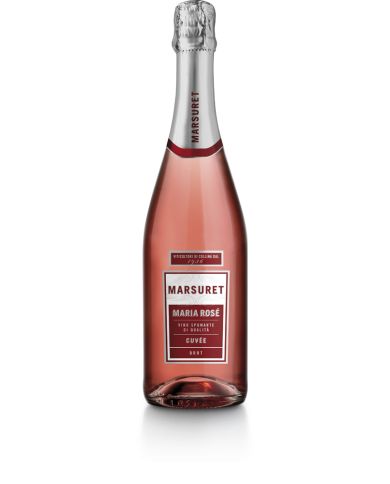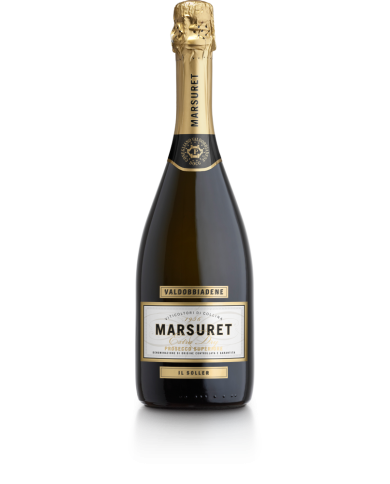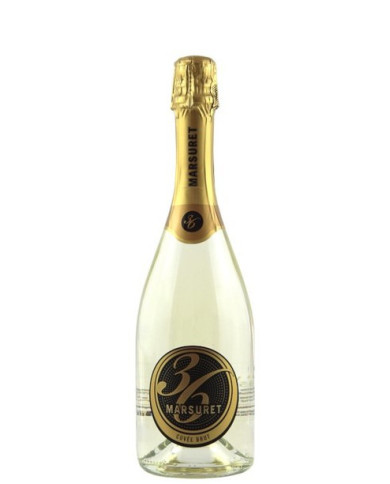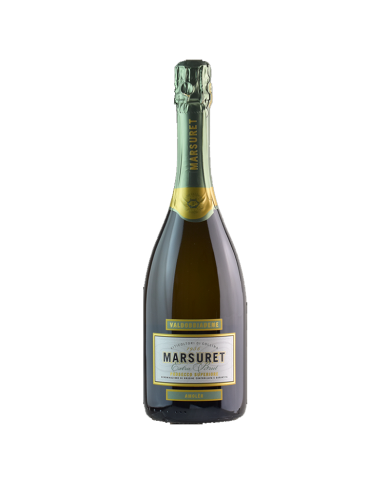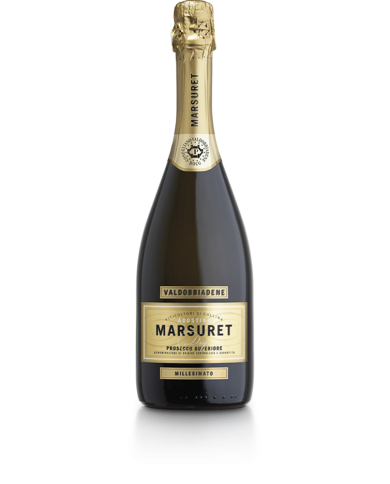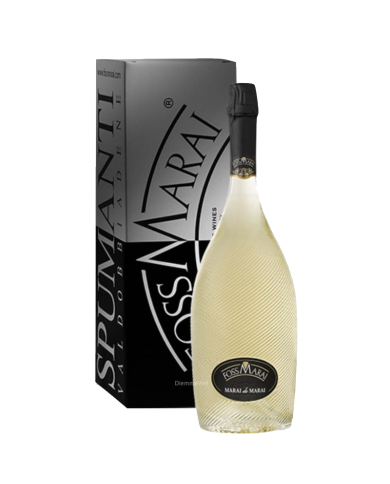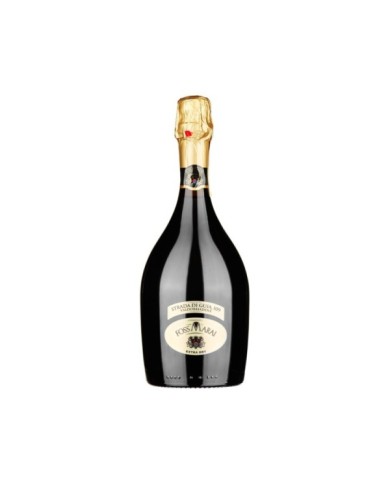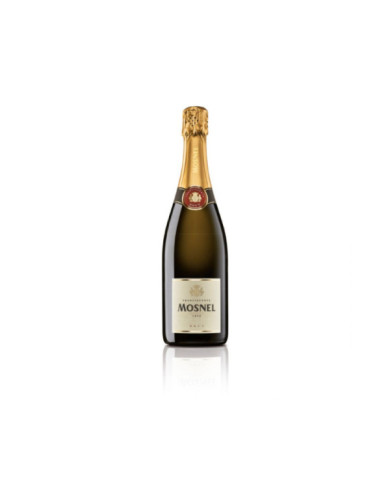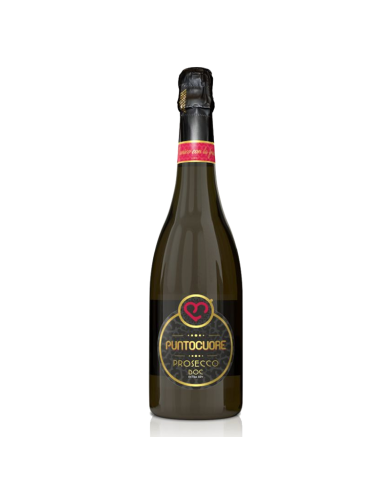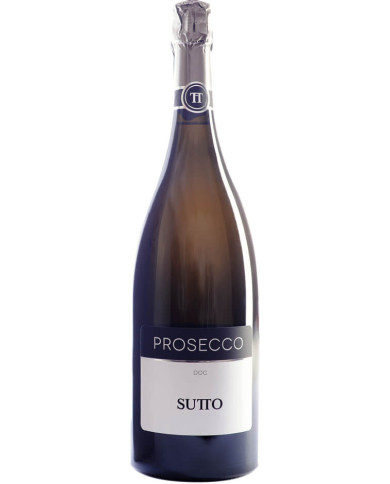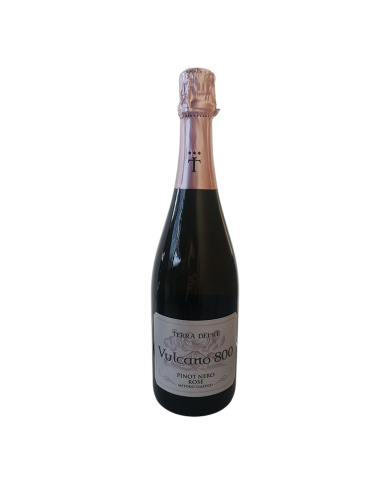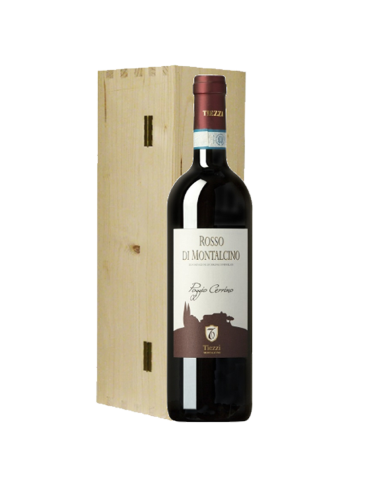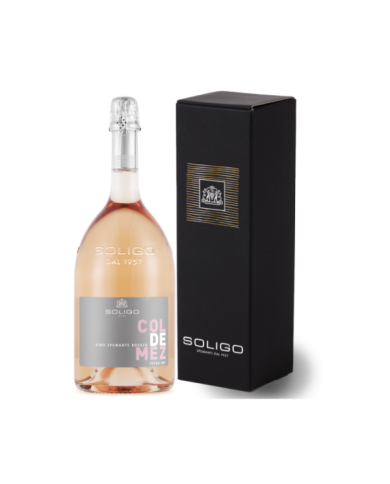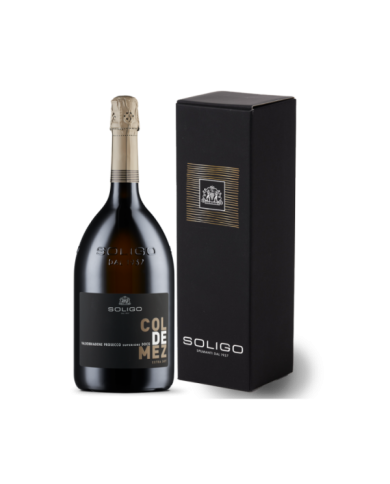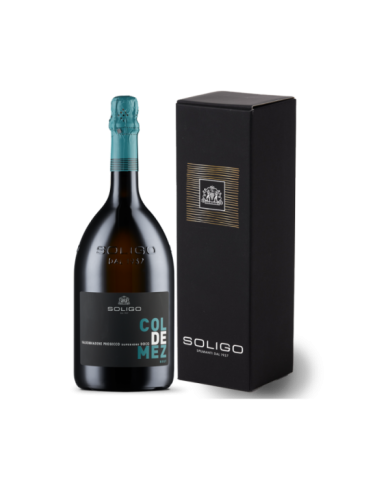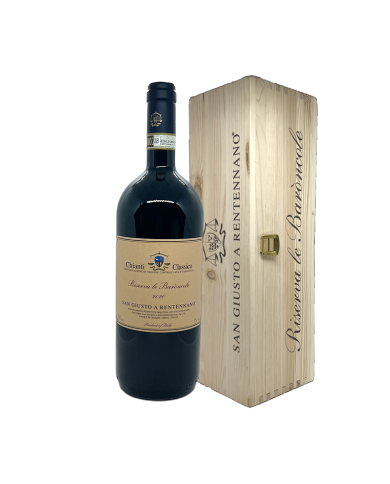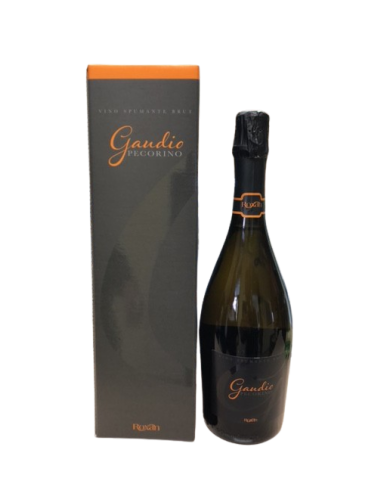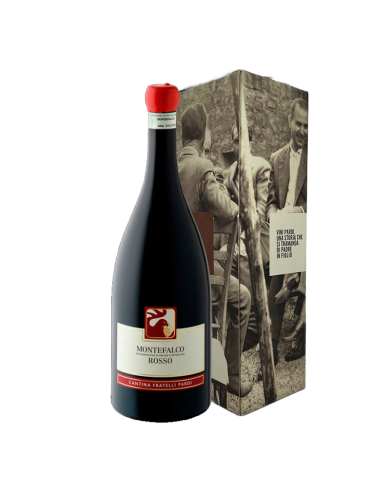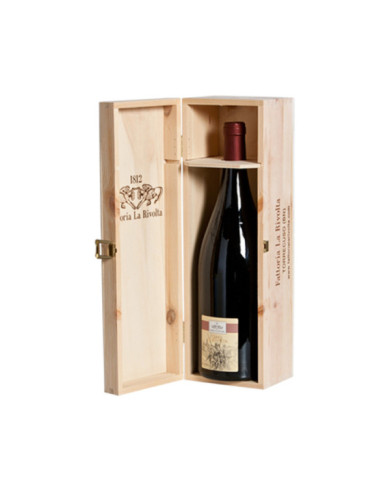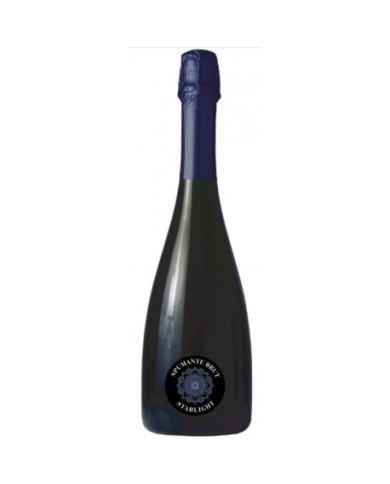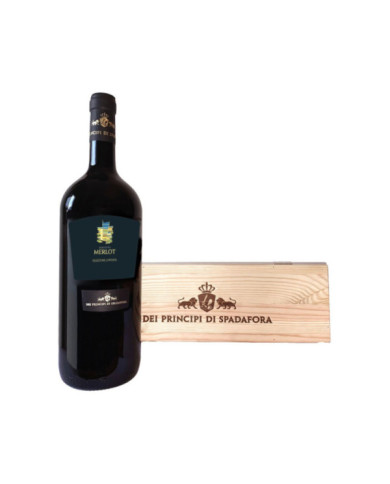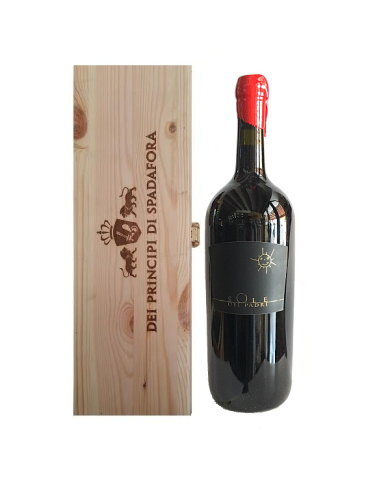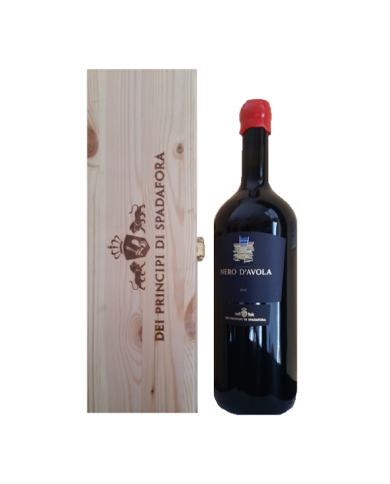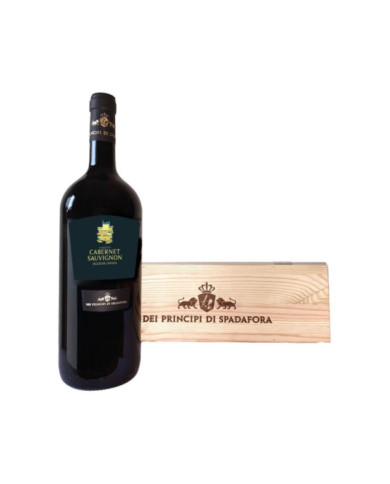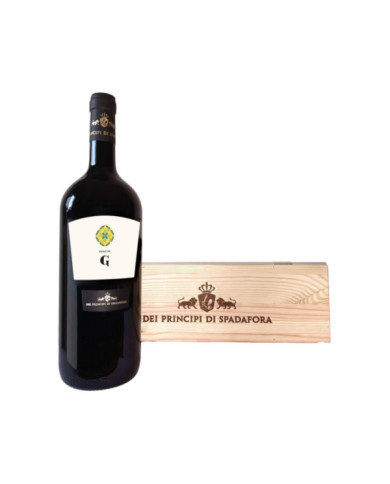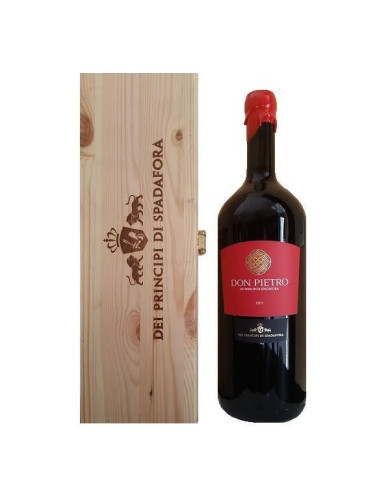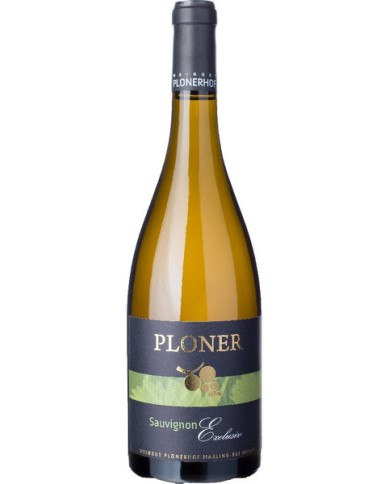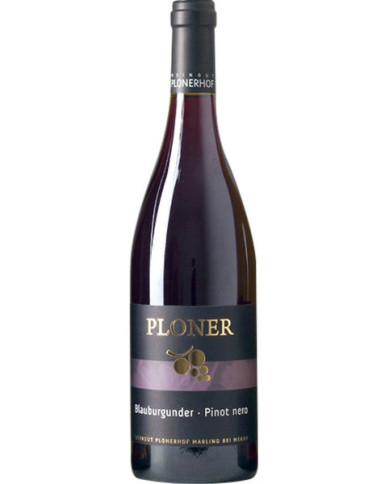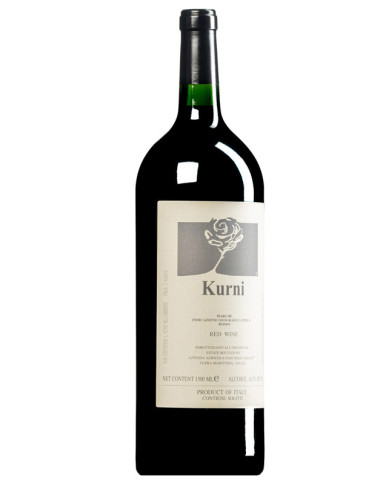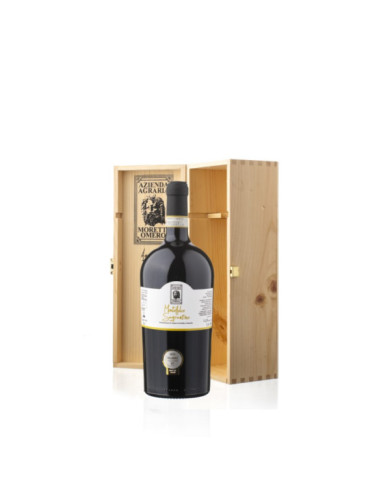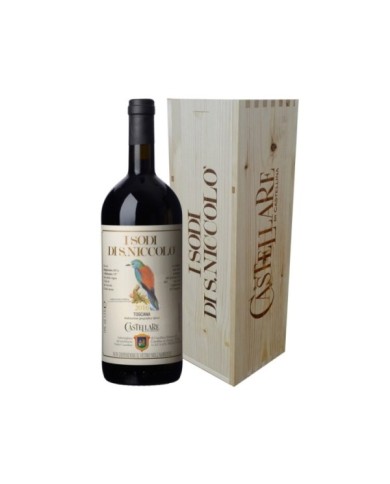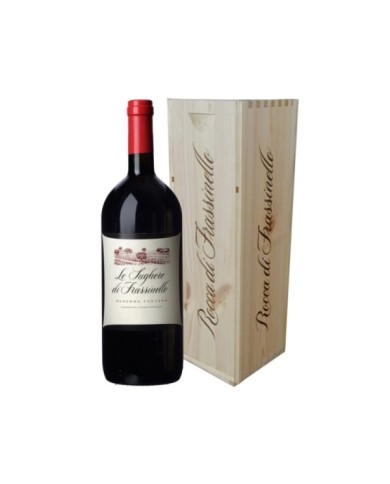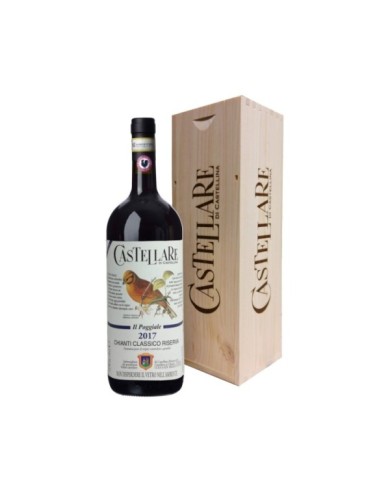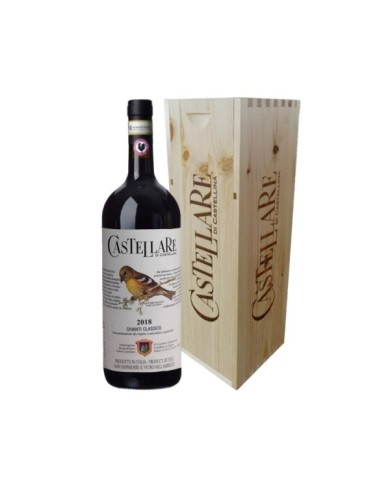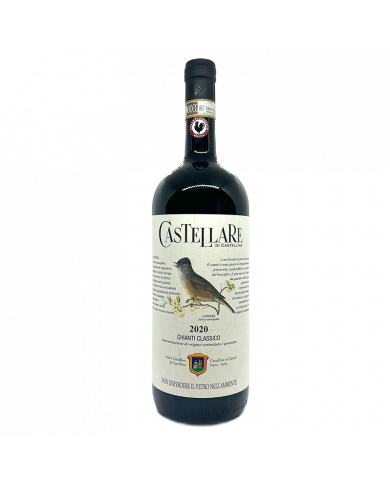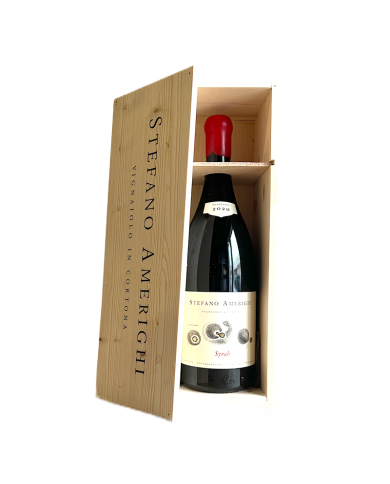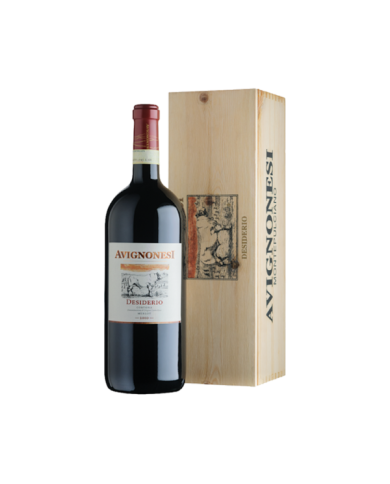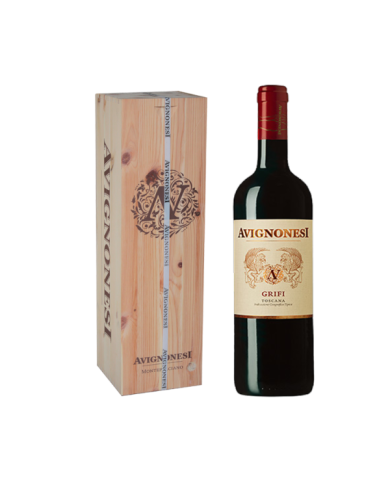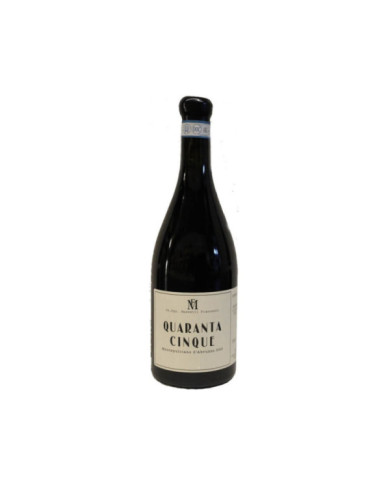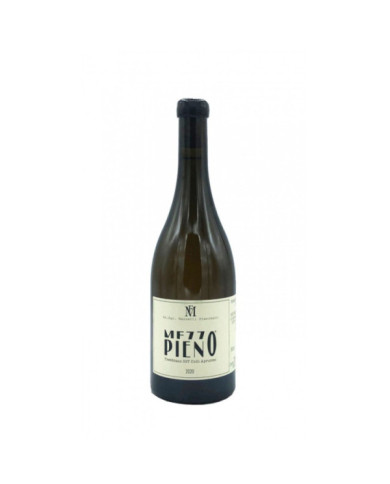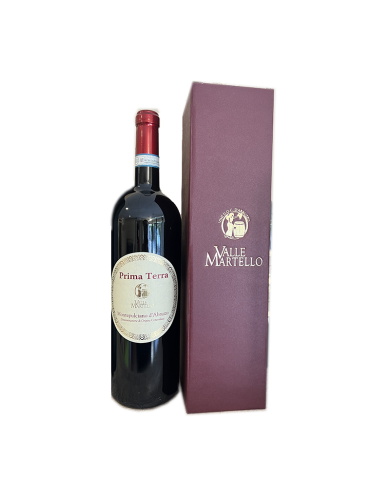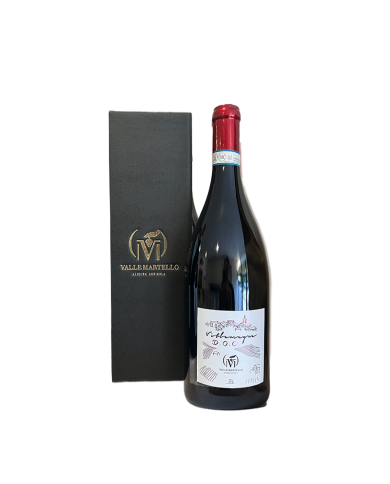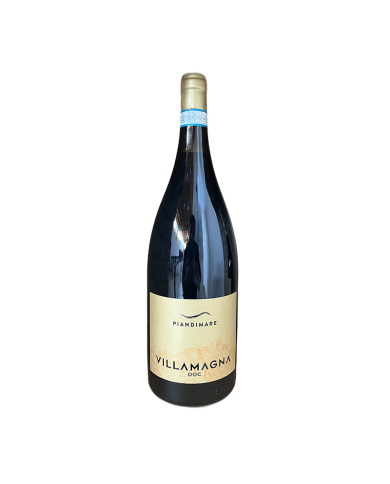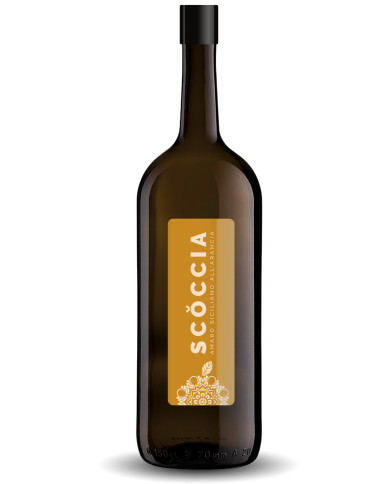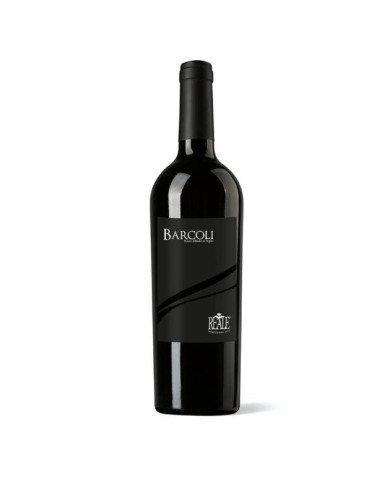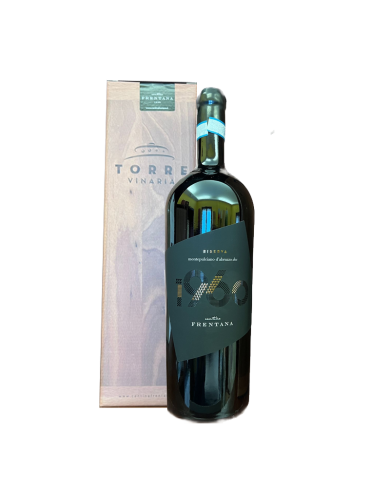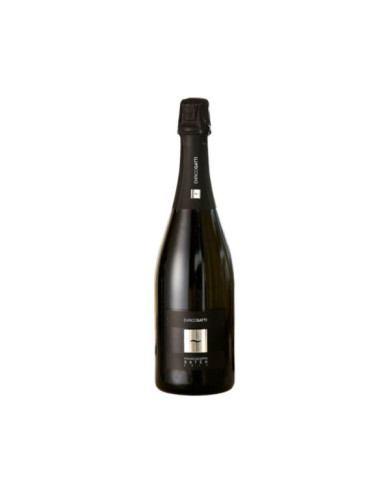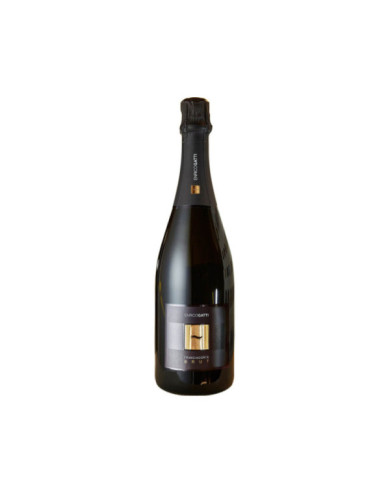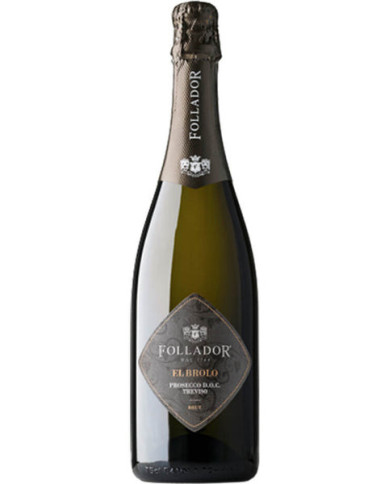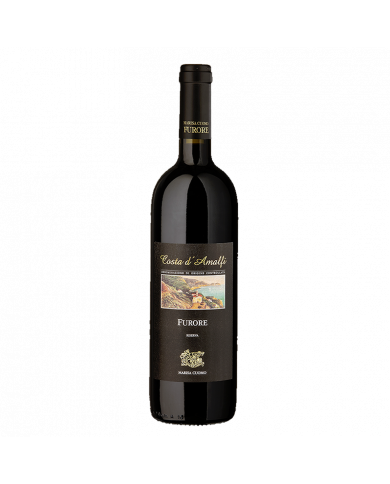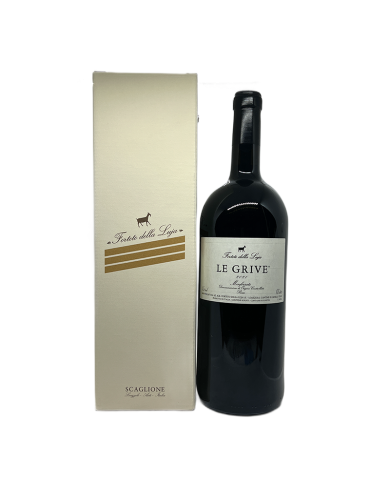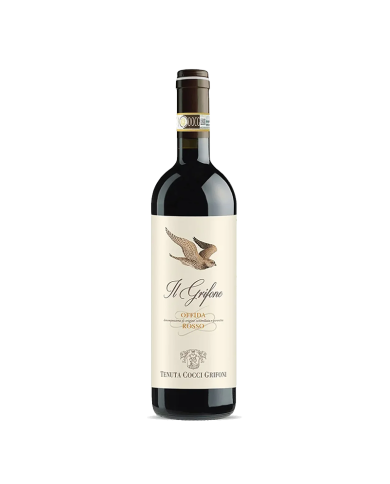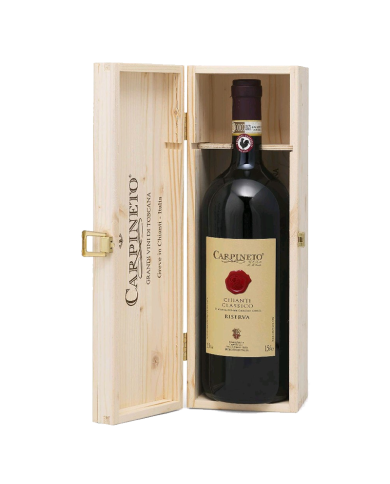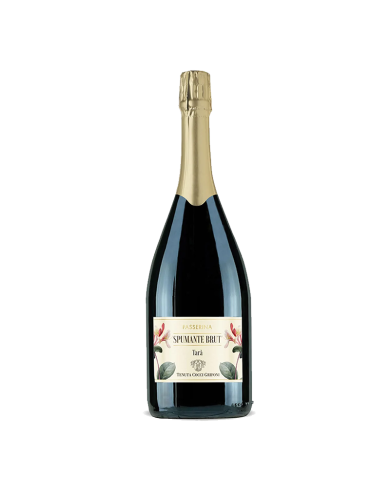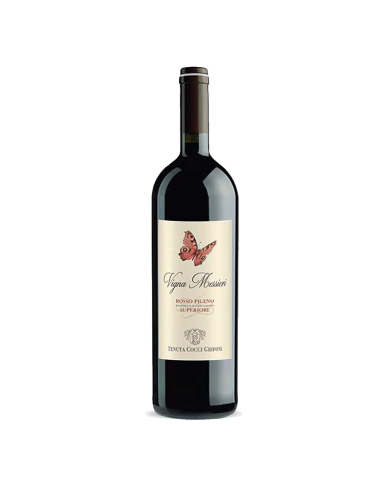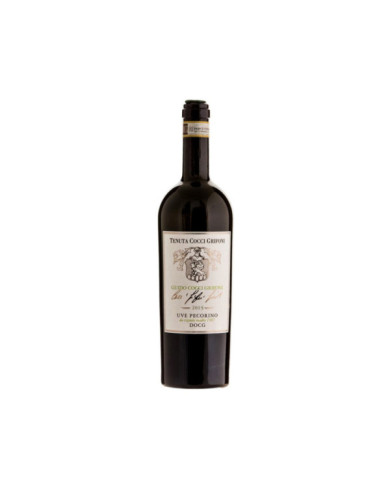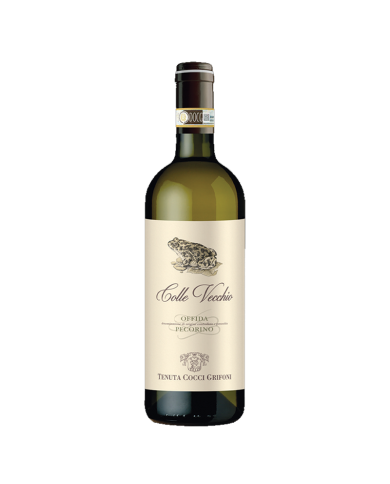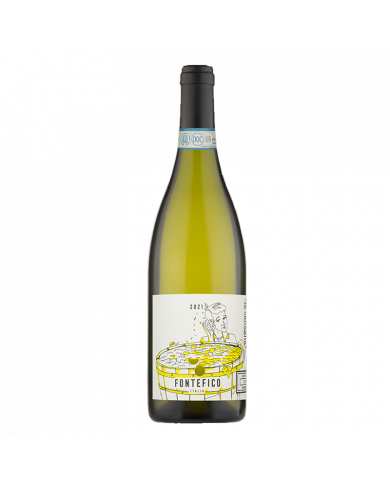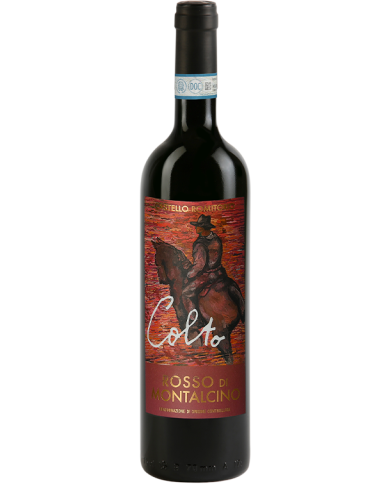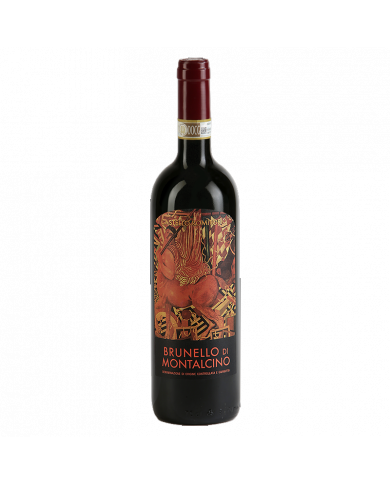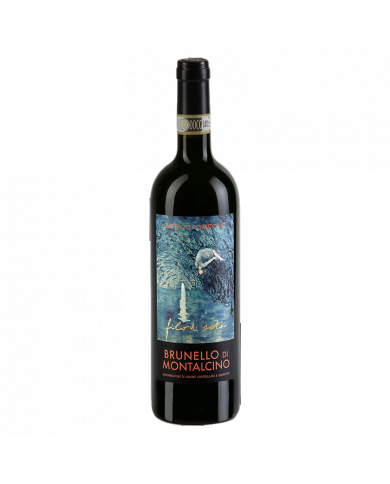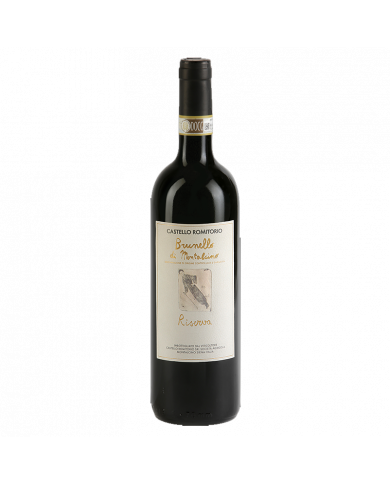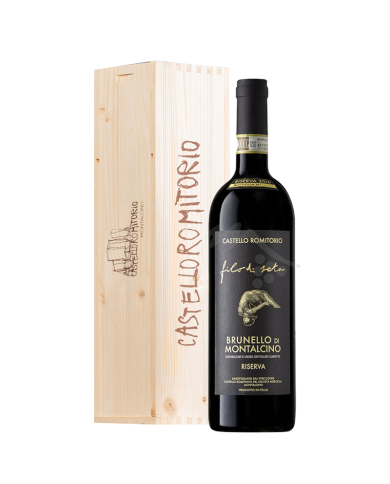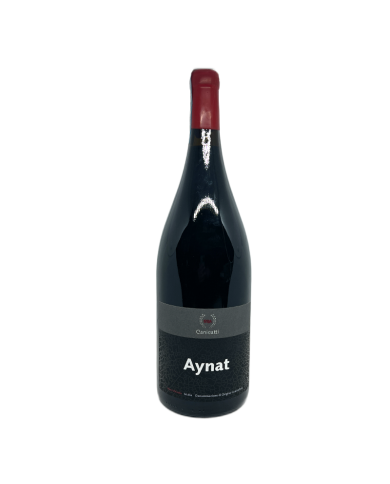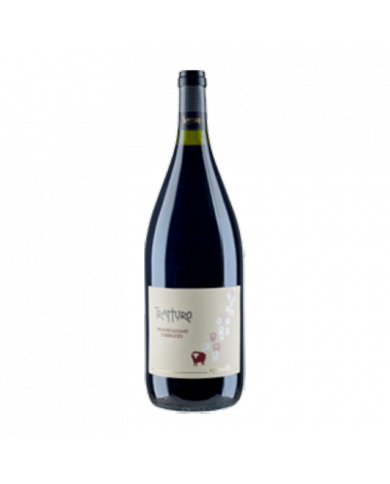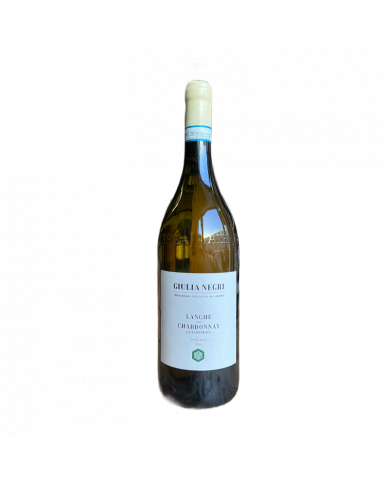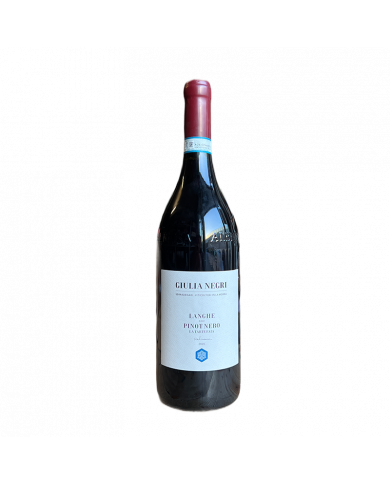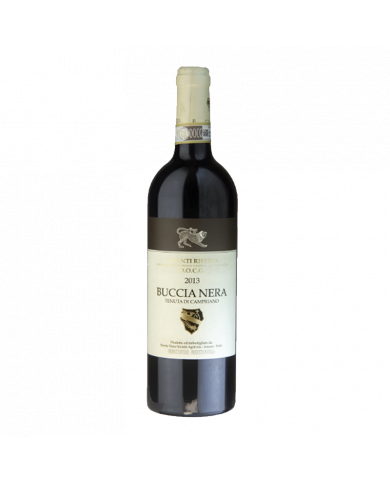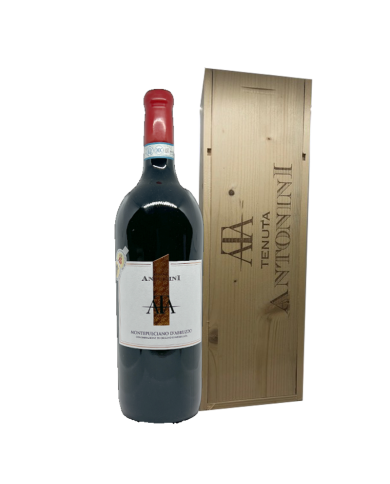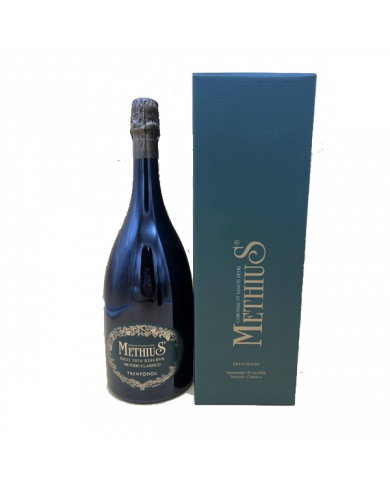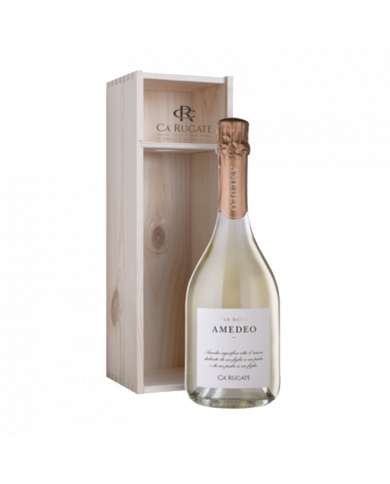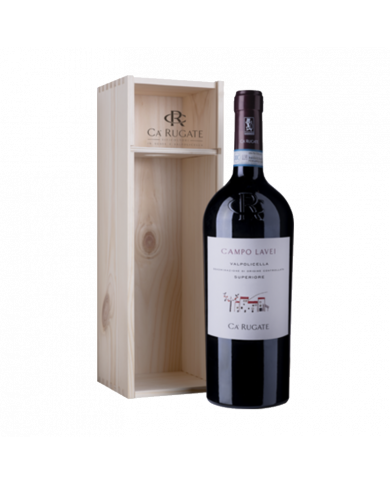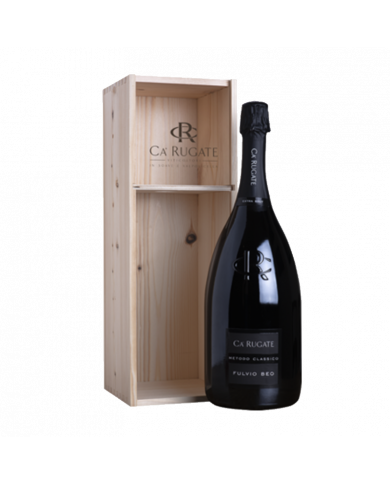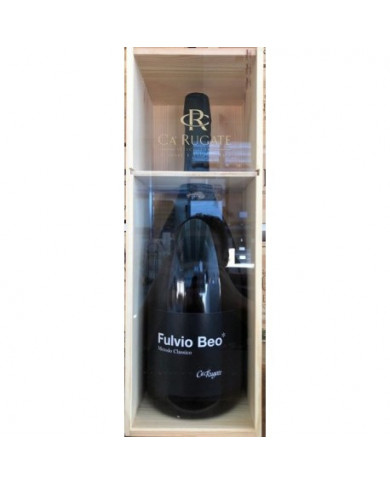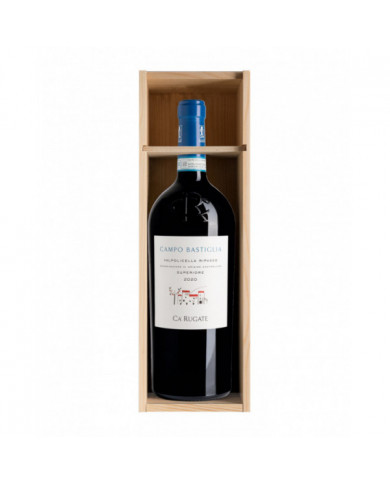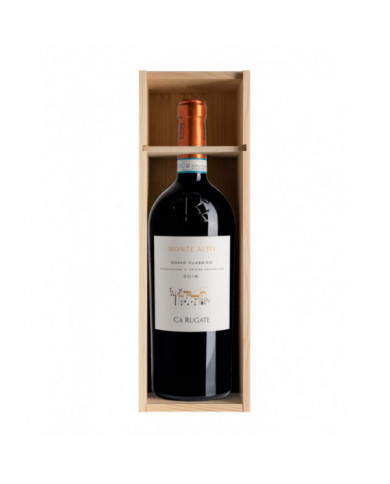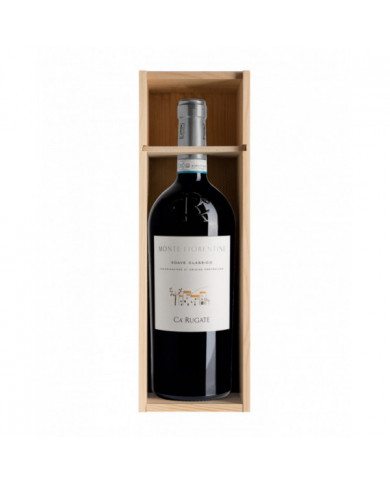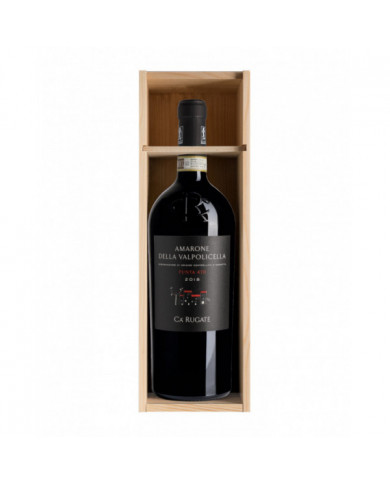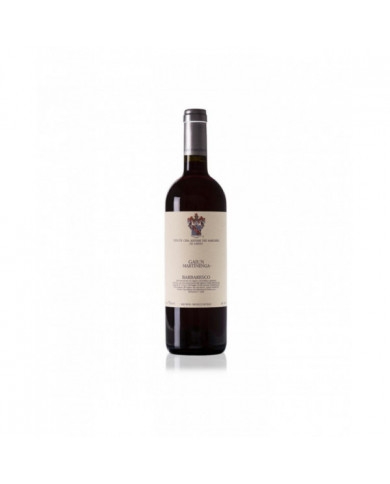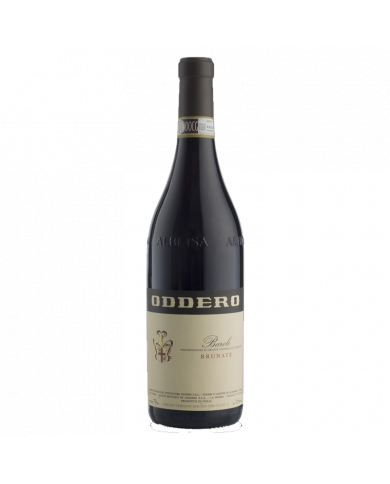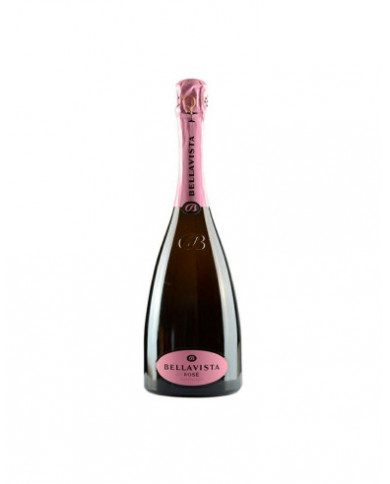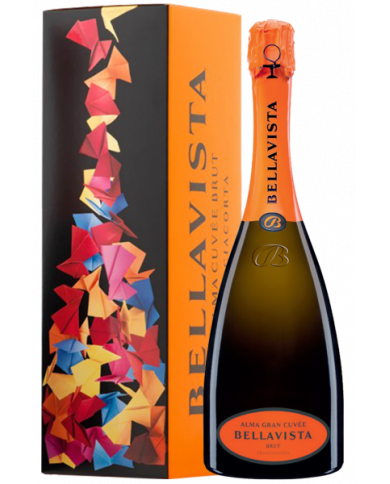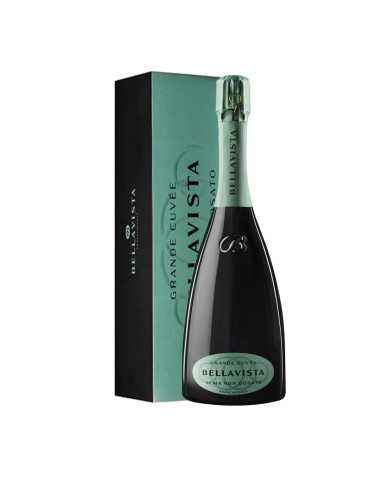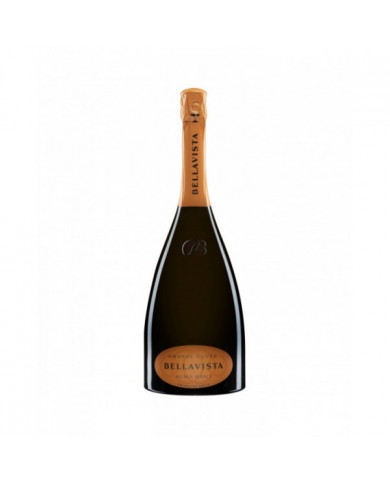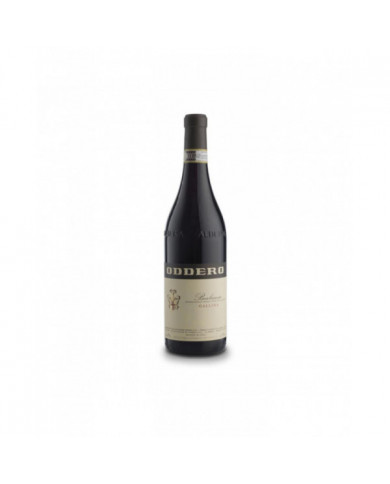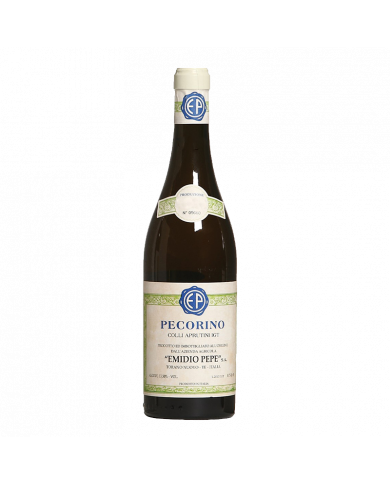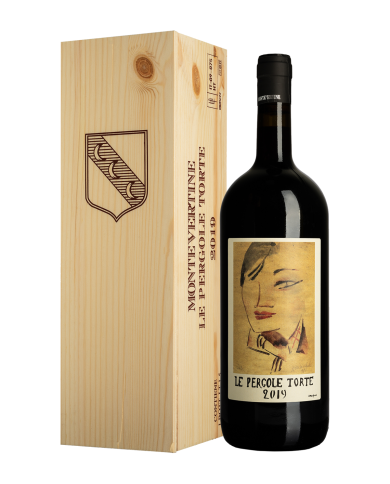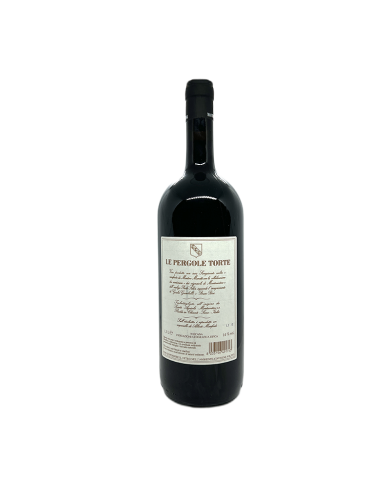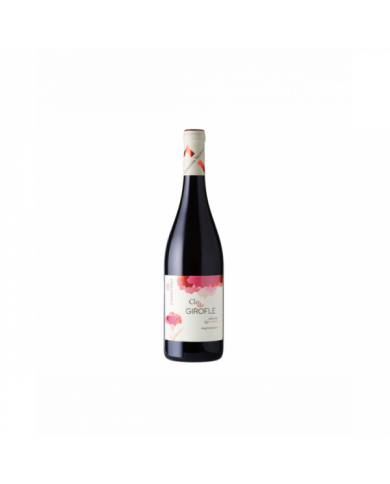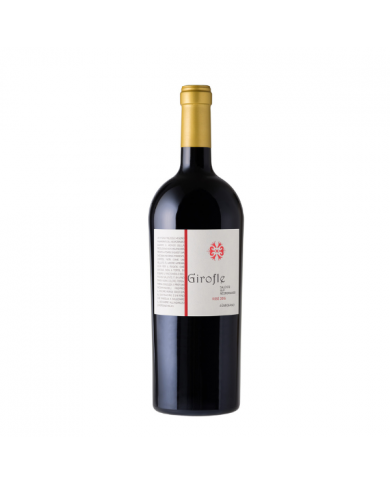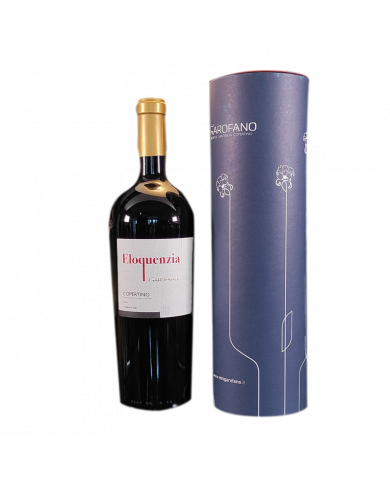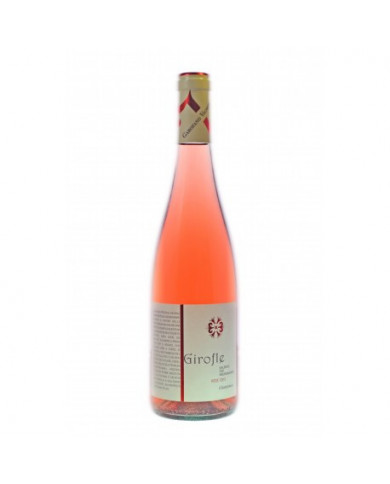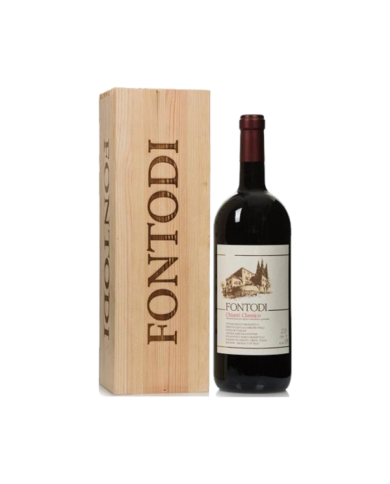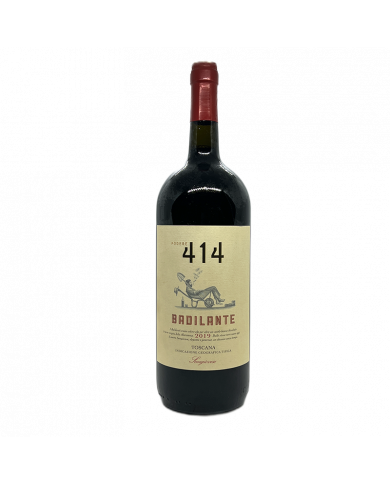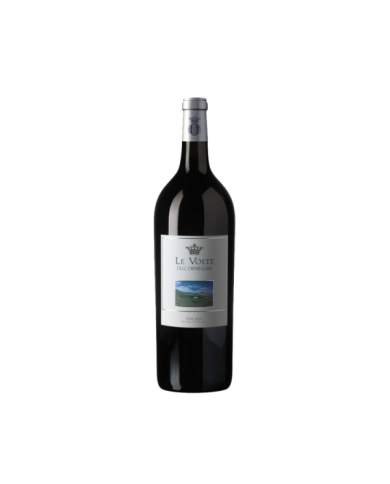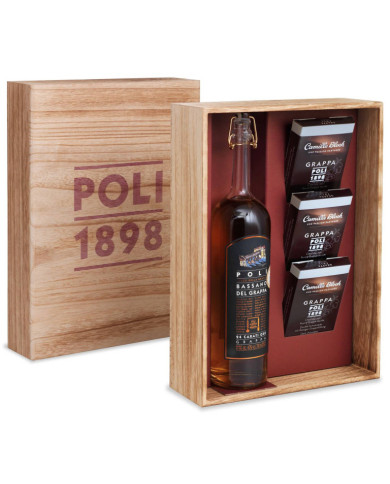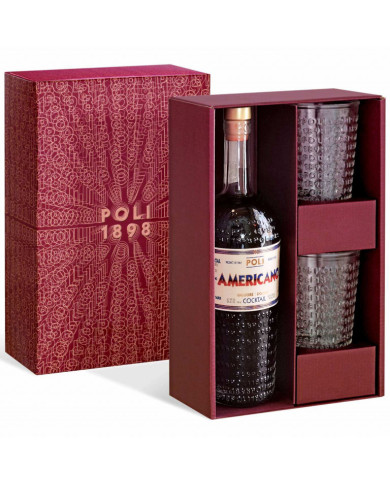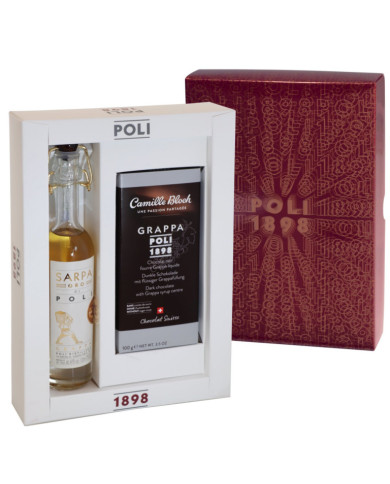Girolamo Russo's Etna Bianco Nerina was born in vineyards located in the extraordinary wine-growing panorama of Etna, a terroir particularly suited to the production of wines of great value and in which the vines are trained as saplings, in this case at approx. 700 m. slm
The Etna Rosso Feudo by Girolamo Russo was born in vineyards located in the Feudo district in Randazzo, in the extraordinary wine-growing panorama of Etna, a terroir particularly suited to the production of wines of great value, thanks to unique temperature ranges.
Girolamo Russo's Etna Rosso Feudo di Mezzo has still young and slightly rough tannins. Of an intense ruby red, it offers hints of ripe fruit, cherry, marasca cherry, aromatic herbs, balsamic essences and notes of vanilla and tobacco on the nose. On the palate it is soft, but with tannins still a little rough, with an excellent structure, a complex of great fullness of taste and persistence
Produced with grapes from vineyards of the companies of Gaville (Florence) and Chianciano/Montepulciano (Siena), the latter planted at high density and considered by us to be particularly happy and suitable for producing great wines.
Chianti Classico Riserva is produced exclusively in the oldest wine-growing area of Tuscany, in a landscape of breathtaking beauty.
Chianti Classico Riserva is produced exclusively in the oldest wine-growing area of Tuscany, in a landscape of breathtaking beauty.
Produced in the oldest production area, as stated in the disciplinary that regulates it, this area gave its name to the wine and is the only one where Chianti Classico is produced. It extends between Florence and Siena in a territory of breathtaking beauty, made up of villages perched on the top of the hills, of olive trees cultivated in steep fields with an irregular outline and of cypresses lined up to delimit the innumerable dirt roads.
This is certainly one of the most innovative wines produced to date. It contains all those characteristics that are most appreciated in wine: the fruity and fragrant aromas, the lively and deep colours, the strength of youth, the maturity of the wood, the softness of elegance.
The Pinot Noir Riserva "Vigna Kolf" is a full-bodied and intense red wine with an elegant and refined profile, born at an altitude of 1030 meters from a single vineyard. Aged for one year in barrique, it expresses aromas of wild berries, cherry and strawberry, followed by notes of cocoa, vanilla and noble woods. On the palate, despite the firm and soft structure, it is agile and vibrant, with soft tannins and a gentle freshness
Compact ruby red. The bouquet reveals the fragrance of red roses, black cherry, blood orange and blackberry. Followed by juniper berries, dried flowers, Tuscan cigars and undergrowth. The tannins are dense and silky which develop on a fresh and savory base. Persistent finish on blackcurrant echoes.
For the vinification of this wine, 30/40% of the grapes are left to dry in wooden boxes for over a month. The remaining grapes are left on the vine and are then harvested when overripe, when the berries begin to brown and dehydrate naturally. The grapes are destemmed and the must is left in contact with the skins for 24-28 hours at a temperature of 12┬░C to allow the wine to accentuate its varietal characteristics and to acquire the golden yellow-amber color typical of this vine . Aging takes place for 60% for 6 months in steel tanks, 40% for 6 months in 300-litre oak barrels and ends with 2-4 months in the bottle.
PIGNOLO BUTUSSI FRIULI VENEZIA GIULIA Grape variety: pure Pignolo Winy, tannic taste, reminiscent of raspberry. It is a wine to be discovered. Wine for meat dishes of Friulian cuisine, especially it prefers the ci├Ār in padiele (beef stew). Serving temperature: 16 ŌĆō 18┬░ C
Straw yellow color tending towards greenish. Delicate and pleasant aroma reminiscent of wild flowers; it has a dry taste with a soft and velvety taste and a bitter almond aftertaste. It is excellent as an aperitif, but also goes well with appetizers in general, with eggs and asparagus and is excellent with San Daniele ham.
Deep dark ruby red that gradually turns towards garnet. Powerful and aristocratic nose made of ripe fruit, jam, sensations of cocoa, walnut husk, tobacco and leather. A powerful yet gentle and elegant full-bodied wine, very noble in roundness, complex and with an unmistakable flavor played on the balance between volume and softness, warmth and freshness, austerity and richness.
This version of Barbaresco Bera takes its name from the Serraboella hill, located in the Municipality of Neive, particularly suited to the production of noble, elegant, long-lived wines. It has a bright ruby color with orange hues, the flavor is robust and full, with spicy sensations. An excellent Barbaresco, complete and characteristic, which lends itself to accompany important dishes based on meat and game. Thanks to its longevity, it can also become a collector's item, which will be able to give us strong emotions even after twenty-five years!
Wine of great nobility, austere, elegant, frank, obtained from Nebbiolo grapes from vineyards owned by the prestigious cru Rabaja in Barbaresco.
The grapes to produce this Asti sparkling wine with finely aromatic characteristics are obtained from vineyards planted with Moscato bianco, on soil rich in limestone. The continuous "perlage", the persistent foam, prelude to the broad and intense bouquet reminiscent of orange blossom and sage. The sweet and inviting taste is attenuated by a stimulating acidity. Ideal with dessert, party wine, as an aperitif and for any other occasion to remember.
There are only 100 bottles of this exceptional 2009 vintage classic method, which the company wanted to produce with its own best grapes, combining the elegance of Pinot Noir with the fragrance of Chardonnay and the softness of Meunier. "Madame Martis" is the successful synthesis of the precious elements that have always characterized the harmonious and decisive style of Maso Martis sparkling wines.
DosaggioZero is a classic method with no residual sugar, with an intense body and aromas, mineral, with a robust and decisive character. One of the first pas dos├© classic method produced in Trentino.
By "closed" was meant a circumscribed olive grove often delimited by stone walls. Chiusa di Pannone was also the same, while today it is the single vineyard used exclusively for the homonymous wine.
Since 1981 Arte has symbolized our desire to experiment; the curiosity to look for new and unexplored paths, without ever forgetting where we come from. This is how Art is born, from the balance between two so different but complementary varieties. Structure and character from Nebbiolo, softness and elegance from Barbera.
In the 1950s, during the reconstruction following the Second World War, Egidio Montagner wanted to commit himself to the creation of his own cellar, in which to produce quality wines. Over the years, the sons of the founder and later his grandchildren contributed to the construction of what is today one of the most prestigious wineries in Motta di Livenza. The refinement of grape processing techniques and the attention to technological innovations applied to the wine sector are determining factors in the affirmation and success of the wines, liqueurs and distillates produced by "Montagner Vini e Spumanti".
Langhe DOC Nebbiolo represents an immediate, pleasant and rounded expression of the Nebbiolo variety. The grapes used come from vineyards located in various municipalities of the Langhe.
Margheria is a small cru in the municipality of Serralunga d'Alba where a slightly sandier soil gives more delicate and refined wines. Massolino has for years been one of the greatest interpreters of this vineyard through a traditional style Barolo, with a long aging of 30 months in large Slavonian oak barrels and a year in the bottle. Barolo Margheria Massolino is an austere and structured wine, with a bouquet that focuses on floral and spicy notes and then veering towards balsamic and mentholated scents. On the palate it is warm and persuasive, with a marked freshness that integrates well with silky tannins. An important wine that embodies the entire history of its land of origin and best expresses its qualities when accompanied by rich dishes, such as roasted red meat or stewed game. Also excellent on medium and long-aged cheeses. To drink today and try again in 15 years
Barolo Massolino represents the synthesis of the different characteristics that each terroir offers. The company has always favored the traditional aging in large Slavonian oak barrels to maintain a purer and more pure identity. Wide and variable range of perfumes, surprising expressive evolution over time.
Barolo Massolino represents the synthesis of the different characteristics that each terroir offers. The company has always favored the traditional aging in large Slavonian oak barrels to maintain a purer and more pure identity. Wide and variable range of perfumes, surprising expressive evolution over time.
Fine perlage. Color Straw yellow. Perfume Bouquet with fruity and floral aromas, accompanied by notes of crusty bread. Flavor On the palate the wine is fresh and balanced.
Pacherhof's Sylvaner is a semi-aromatic white wine of medium body and good freshness, aged for a few months in large barrels. It has a fine and delicate bouquet of freshly mown hay, herbs, fruit and white flowers. On the palate it is clear, mineral, fresh and fruity, with a nice persistence
Pacherhof's Kerner is a clean, precise and vertical wine, with a fresh and light personality, not without tension and aromatic richness. Aromas of citrus fruits, exotic fruit and sweet spices involve the sense of smell while the sip reveals character, softness and great expressive power
Lacrima is a very particular vine, grown only in the terroir surrounding the municipality of Morro d'Alba. It is said that even Frederick Barbarossa appreciated it in the distant 1167 AD, when he settled in these territories to attack nearby Ancona. A strongly rooted grape, which the Marotti Campi company likes to decline in two versions: in particular this Lacrima Superiore DOC "Orgiolo" stands out for its precious olfactory bouquet, which, combined with an extremely pleasant drink, makes this bottle truly remarkable.
Straw yellow, with a rather fine perlage. On the nose it expresses fragrant aromas of white pulp fruit, on the palate it is fresh, very soft, full. A rich and pleasant taste, whose closure stands out for its cleanliness. Excellent as an aperitif, it goes well with light appetizers. Excellent on typical vegetarian dishes.
Straw yellow, with a rather fine perlage. The nose reveals fragrant aromas of acacia and apple. Captivating aromas, which open to a well-balanced taste between freshness and residual sugar. It closes with a finish of excellent persistence. Also as an aperitif, it goes well with delicate fish and white meat dishes.
Denomination: Franciacorta DOCG Brut Nature. Grapes: Chardonnay, Pinot Blanc and Pinot Gris. Recommended pairings: First courses, fish main courses and white meats. Alcohol: 12.5% Vol. Format: 1.5 lt. Serving temperature: 4 - 6 ┬░C. Typology: Franciacorta.
Wine obtained from Sangiovese grapes, exclusively from the vineyards of the "Soccorso" farm unit near the church of the Madonna del Soccorso, patroness of the inhabitants of Montalcino.
Wine obtained from Sangiovese grapes, exclusively from the vineyards of the "Soccorso" farm unit near the church of the Madonna del Soccorso, patroness of the inhabitants of Montalcino.
Wine obtained from Sangiovese grapes, exclusively from the vineyards of the "Soccorso" farm unit near the church of the Madonna del Soccorso, patroness of the inhabitants of Montalcino.
The Chianti Classico Riserva "Le Baroncole" expresses the richness and beauty of the Tuscan land. Refines for 16-20 months in oak barrels and casks and is enriched with vanilla nuances, in addition to the already present fruity and spicy aromas typical of the type. The taste is balanced, complex and deep, supported by a nice tannic texture and a pleasant savory tip
It is a brut sparkling wine with a wide and persistent froth, fine and continuous perlage, a light straw color. The aroma is intense and balanced finesse. The full flavor expresses the typicality of the production area.
It dresses the glass in a beautiful deep ruby red. The nose is first set on dark fruit in jam and in alcohol, such as currants, black cherries and plums, then followed by intense references to green pepper, cocoa, rhubarb, licorice and chinotto. The mouth is extremely consistent with the nose, and is powerful but well managed in the tannic texture, warm, with excellent body and long persistence.
The Kurni wine of Oasi degli Angeli is born in vineyards located in the valley of the Sant'Egidio stream, in the municipality of Cupra Marittima, the winery's flagship wine, where everything has been focused on a management of the vineyards compatible with the pure needs of a territory poor in soil characteristics.
Vibrant ruby red. Small red fruits on the nose, including the typical hint of blackberries. Balsamic hints. Elegant and powerful. Persistent finish with returns of berries and spices. Fermentation 15 days. Maceration 20 days on the skins. Contact with fine lees for 6 months. Batonnage.
Rapture of the Grape, a special collaboration between Rocca di Frassinello (born from the joint venture between Castellare di Castellina and Domaines Barons de Rothschild) and David LaChapelle, master of beauty and communication, Canadian of Lithuanian blood, former student of Andy Warhol.
Intense ruby red. The nose reveals notes of red fruit, in particular blackberry and blueberry, tobacco and vanilla. On the palate it is full, robust, outlined by a good freshness, of great persistence. Throughout the meal, it goes well with stewed red meats and game, excellent with spicy cheeses.
Intense ruby red with slight garnet reflections. The nose expresses beautiful spicy notes that are flanked by strong fruity, cherry and blackberry hints. Balsamic traces of cocoa, tobacco, mint open to a taste of great breadth and infinite grace, deep and balanced. Of great persistence. Throughout the meal, it goes well with red meats, roasts, game and aged cheeses.
Intense ruby red with garnet reflections. The nose expresses richness and intensity thanks to beautiful fruity and slightly spicy, balsamic and floral notes. On the palate it is centered, juicy, fine and complete. It closes with a vibrant and persistent finish. Throughout the meal, it goes well with salami and meats rich in flavor, tasty and aromatic cheeses.
Intense ruby red. The nose expresses beautiful notes of red fruits and sweet spices, a balsamic and only remotely vegetable touch. On the palate it is rich, full-bodied, soft and characterized by a velvety tannic texture. Of excellent persistence. For the whole meal, it goes well with savory first courses and game such as deer, wild boar, hare.
Intense ruby red. The nose expresses balsamic notes, hints of coffee and red fruit. On the palate it is soft and velvety, intense, warm and with excellent persistence. For the whole meal, it goes well with meat dishes, including important roasts, cured meats and medium-aged cheeses.
Intense and bright ruby red color to the eye. The nose is opened by the classic floral hints of violet, then followed by the fruity notes of plum, morello cherry and cherry, finally completed by a pleasant mineral nuance. The mouth continues on the path traced by the sense of smell, revealing itself to be typical, punctual and of excellent length.
Perfect to accompany red meat, it is ideal to be paired with the cut of Chianina.
The Chianti Classico of Castellare di Castellina is born in vineyards located in the municipality of Castellina in Chianti. It is produced with 95% Sangiovese grapes and 5% Canaiolo grapes, harvested in October. Fermentation takes place in stainless steel tanks at a controlled temperature of 28 ┬░ C for 15-20 days. Subsequently the wine is aged in barrique for 7 months, and for a further 7 months in the bottle. This Chianti Classico is characterized by a brilliant ruby red color with purple reflections. The nose opens with hints of cherries and violets, enriched by pleasant spicy notes of licorice and vanilla. On the palate it is balanced, with harmonious and delicate tannins. The wine has a finish that gives pleasant sweet sensations. Perfect to accompany cold cuts, first courses with meat sauce and roasts, it is ideal in combination with stews, game and aged cheeses.
The Chianti Classico of Castellare di Castellina is born in vineyards located in the municipality of Castellina in Chianti. It is produced with 95% Sangiovese grapes and 5% Canaiolo grapes, harvested in October. Fermentation takes place in stainless steel tanks at a controlled temperature of 28 ┬░ C for 15-20 days. Subsequently the wine is aged in barrique for 7 months, and for a further 7 months in the bottle. This Chianti Classico is characterized by a brilliant ruby red color with purple reflections. The nose opens with hints of cherries and violets, enriched by pleasant spicy notes of licorice and vanilla. On the palate it is balanced, with harmonious and delicate tannins. The wine has a finish that gives pleasant sweet sensations. Perfect to accompany cold cuts, first courses with meat sauce and roasts, it is ideal in combination with stews, game and aged cheeses.
This Syrah is Stefano Amerighi 's representative wine, the result of his work and his idea. A broad idea that goes from the soil to the plant to the balance of nature.
With a warm and sensual character, full of fruity notes and sweet spices, Desiderio 2016 goes perfectly with savory dishes, such as roast lamb, aged cheeses and game. Intense ruby red in color, this wine reveals an inviting bouquet of black cherries and blackberries with notes of eucalyptus and fresh mint, underlined by elegant sensors of roses and sandalwood. Well structured and very persistent, in the mouth it is enveloping and caressing, characterized by fruity notes and fine-grained tannins.
Prima Terra is a wine obtained from Montepulciano grapes grown in an ancient vineyard of the Masci family, the former, as anticipated by its name. Aged first in large wooden barrels, it then rests in the bottle for at least a year. It has an intense ruby red color. On the nose it expresses strong jam aromas and on the palate a pleasant softness obtained from a delicate aging.
Villamagna DOC is the result of the project to enhance our wine area. It comes from a late harvest with manual harvesting of the selected grapes. Ruby red in color with purple reflections, the nose expresses intense aromas of red fruit, especially black cherry. In the mouth it fills the palate with its soft and velvety taste. Balanced and harmonious, it is a wine that goes well with Mediterranean cuisine, main courses of meats, salami, aged cheeses.
It is with the arrival of the new Villamagna Doc that Cantina Piandimare expands the line of its Montepulciano d'Abruzzo from the Piandimare massale selection with a further red that wants to be the umpteenth praise to the territory and the demonstration of the potential in terms of structure and aging. through the work done by the winery with only the grapes coming from the Val di Foro, in particular from those of the territory limited to the small, but growing interest, Doc Abruzzo Villamagna.
This amaro is born from the juicy Sicilian oranges, the result of a skilful infusion process between the bitter orange peel and a precious mix of bittering herbs which gives Scoccia its characteristic round and persistent flavor on the palate.
Great wine with a dark red colour, fruity, spicy bouquet, full, very harmonious and pleasant taste.
Important red wine whose vines are grown on volcanic soil on the hills of Taurasi. The name of our wine derives from the place where horses were once said to graze in the wild, and where the remains of the ancient hermitage of S. Quirico can still be found. A wine so precious as to dress it with a work of art by the contemporary painter Moreno Bondi.
Ruby red wine, intense and impenetrable, with garnet and lively reflections in evolution. Dense and regular arches with a nice texture. The nose is intense with notes of red fruit such as cherry in alcohol, raspberry, ripe blackberry. There are evident sweet spices of licorice, vanilla with notes of toasted cocoa. At the end sweet balsamic notes. In the mouth it is warm, of good intensity with savory notes and tannins in the right evolution.
Chianti Classico Riserva is produced exclusively in the oldest wine-growing area of Tuscany, in a landscape of breathtaking beauty.
Chianti Classico Riserva is produced exclusively in the oldest wine-growing area of Tuscany, in a landscape of breathtaking beauty.
Chianti Classico Riserva is produced exclusively in the oldest wine-growing area of Tuscany, in a landscape of breathtaking beauty.
Produced in the oldest production area, as stated in the disciplinary that regulates it, this area gave its name to the wine and is the only one where Chianti Classico is produced. It extends between Florence and Siena in a territory of breathtaking beauty, made up of villages perched on the top of the hills, of olive trees cultivated in steep fields with an irregular outline and of cypresses lined up to delimit the innumerable dirt roads.
Our first hectare, the one from which the history of Pecorino began. The first parent of Colle Vecchio is today dedicated to Guido Cocci Grifoni and to the bottle that bears his name. It is our most recent version of Pecorino, a wine made in a few numbered specimens, in memory of who, where and when. And not to praise or glorify the past, but to photograph a moment of our past that has become present and future. Using descriptors today, for a wine that will have a life of more than ten years, seems almost out of place. Only a few notes therefore, to give a reference, a trace of his first, very young expressions. Among our whites it is certainly the fullest, the most saline, the most present and the softest. It opens with notes of ripe apple and then moves on to intense and fleshy yellow flowers. The aromatic herbs come forward decisively, accompanying a fascinating scent of star anise.
A milestone of our hills brought to light thanks to the adventurous spirit of Guido Cocci Grifoni. Some wonder who took over the lead. We in the winemaking choices, he in the expression of his nature. Neither one nor the other. We have listened to and explored his intentions for years, respecting and supporting his nature and his inclinations so that he became what he wanted to be. And today it is a dry, intrepid wine with impactful acidity, full and soft. Fruity of ripe pear, it turns to floral notes of lily of the valley and broom and then returns to fruit, this time tropical, such as mango. The freshness is manifested with accents of lemon grass and sage to be enjoyed for years.
Around the 12th century, an ancient villa known as ŌĆ£il castellare de YliceŌĆØ stood near our cellar. The name was probably due to the Latin term ilex (holm oak), a particular variety of oak very common in our area. To date, no trace has remained of this historic villa, but the passion and respect we have for our territory has prompted us to pass on the name of that ancient presence.
From the archaeological discovery of a mammoth tusk in the second half of the 60s at the point where the current company "La Cascina del Colle " was built. Hence the idea of a lively, powerful and majestic wine
Invasione Riserva Villamagna Cascina del Colle , ruby red. On the nose hints of red fruit and aromas of jam. Round and balanced on the palate, pleasantly tannic.
This superior pecorino comes from the white vineyard, a spiteful vineyard because, despite our attentions, it has very low yields, as if it wanted to avoid the effort of producing more grapes. But then he is forgiven by giving us a unique, fresh and voluminous wine, which you will never tire of drinking. It is the "rogue" of Fontefico.
Since the 2020 vintage, Castello Romitorio has been producing a new Rosso di Montalcino called Colto. A Rosso di Montalcino with a vibrant, long and expressive colour, the result of young and strong vines planted in the uncontaminated territory of the Castello Romitorio north-west of Montalcino. The wine is produced in very small quantities (only 6000 bottles).
Brunello di Montalcino Castello Romitorio is our pride: the fruit of more than thirty years of work in harmony with nature in the Montalcino terroir. The Romitorio company is located in the northwest quadrant of Montalcino where this classic Brunello is produced from Sangiovese grapes, coming from old and young vines, carefully harvested and selected by hand on the counter, before and after destemming. Fermentation takes place in stainless steel tanks, with a short initial period of cold maceration (below 20┬░C) on the skins for approximately 15-20 hours, followed by a higher controlled temperature maceration which can last up to 20 days. Malolactic fermentation begins naturally and lasts for about 10 days before the wine is left to rest to separate it from the sediment.
Filo di Seta expresses the strong, though always very elegant, character of the wild and dark soul of the microclimate that characterizes the north-western area of the Municipality of Montalcino. The historic Sangiovese vineyards are located at an altitude of about 350 meters above sea level, they are looked after with dedication and passion so that each plant can give birth to harmonious and balanced products, which allow the bunches to reach optimal ripeness.
Only a truly exceptional harvest can give life to Castello Romitorio's Brunello di Montalcino Riserva. Since its foundation in 1984, Castello Romitorio has produced only 10 vintages of this precious wine. The rigorous selection of the grapes destined for the reserve takes place among the oldest vines located in the area north of Montalcino. Each single segment of the vineyard is monitored throughout the vegetative development, the most suitable sections are then chosen, the vines of which are looked after with extreme care, in order to ensure that the fruit reaches optimal ripeness.
Filo di Seta Brunello di Montalcino Riserva is the result of a prolonged refinement and a rigorous selection of the best barrels of the Brunello di Montalcino Filo di Seta harvest. The 2016 vintage, aged for a total period of 63 months, which therefore obtains the denomination of Riserva, is the first of this rare and magnificent wine to be placed on the market.
A Nero d'Avola of great harmony, our spearhead. Surprising in its aromas, precious for the elegance and silkiness of its tannins. An exciting wine.
Montepulciano d'Abruzzo Tratturo originates from the union of Montepulciano and Sangiovese grapes, in the Abruzzo hills, where there is soil and optimal climatic conditions that allow it to best express its qualities.
Red is the color of passion. Strong, energetic, charged, exciting: our Montepulciano d'Abruzzo is exactly like that, enveloping and full-bodied. Each sip encourages the discovery of its sensorial complexity, but also to let oneself be pervaded by positive sensations and share them with those around us.
Il Trentino ├© una terra indubbiamente vocata alla produzione di basi spumanti. Se si aggiunge una produzione artigianale e rispettosa delle tradizioni ecco che si ottiene TRENTODOC, ovvero il metodo classico trentino.├© da questi presupposti che nel 1986 nasce METHIUS TRENTO DOC grazie allŌĆÖamicizia tra due amici enologi: Carlo Dorigati ed Enrico Paternoster. Il Trento Doc Methius ├© prodotto solo nella tipologia riserva, a sottolineare la qualit├Ā eccelsa di questo prodotto e la sua unicit├Ā. La cantina dŌĆÖinvecchiamento, ubicata a Mezzocorona (Trentino), risale ai primi del 1900, ├© completamente interrata e costruita con i ŌĆ£volti a botteŌĆØ quasi tutti in pietra squadrata. Qui le bottiglie di Methius sostano per 60 mesi, a temperatura e umidit├Ā pressoch├® costanti tutto lŌĆÖanno. Il nome ŌĆ£MethiusŌĆØ deriva dalla ricerca di un toponimo locale che accomuna lŌĆÖorigine del prodotto aziendale al territorio di nascita. LŌĆÖetimo del nome scelto si perde nella storia. Si sa che gi├Ā nel 1150 (Principe Vescovo e Mainardo II conte di Tirolo) il nome delle due borgate site nella ŌĆ£Piana RotalianaŌĆØ erano: Methius Coronae (oggi Mezzocorona) e Methius Sancti Petri (oggi Mezzolombardo) ove il radicale comune ŌĆ£MethiusŌĆØ deriva dal celtico e latino volgare.
Delicate hints of freshly baked croissant crust, with references to spices and notes of white peach, accompanied by a vigorous and enveloping drink, supported by a whipping and crystalline acidity.
The Valpolicella Classico Superiore "Campo Bastiglia" by C├Ā Rugate has a deep garnet red colour. On the nose the aromas are fruity with notes of cherry and red fruit with floral and spice nuances. The taste is full and velvety thanks to the soft tannins that characterize it. Ripasso is a traditional practice which involves, after pressing the dried Amarone grapes, the refermentation of the pomace on a vintage wine. The subsequent refinement takes place 50% in tonneaux and 50% in steel for a period of about 8 months. The best grapes from the various owned vineyards are located in the hilly area of Montecchia di Crosara, in soils rich in skeleton and mainly calcareous. A great wine with excellent value for money.
The Soave Classico "Monte Alto" is a soft and fragrant white wine from the Veneto region, which the aging on the lees in barriques and oak barrels has contributed to rounding out. On the nose emerge aromas of flowers, yellow fruit and almonds. The sip is enveloping, fresh and intense, with a good structure. The "Monte Alto" belongs to the group of crus of Ca' Rugate, historic company of the Tessari family, born in the heart of Valpolicella, between Monteforte d'Alpone and Montecchia di Crosara, and witness for over a century of a viticulture closely linked to local traditions and local vines. Spread over an area of over 4000 meters and divided over 3 levels, the cellar allows the company to concentrate all the processes of vinification, refinement, bottling and storage in a single location. The owned vineyards, located on the Rugate hill which gives the company its name, are cultivated partly with the Veronese pergola system, partly with the guyot system. On the south-facing slopes, where the cultivation of vines finds particularly favorable conditions, the soil is basaltic and rich in clay and silt. The area is vast and rather homogeneous, with characteristics that have made it possible to identify particular micro-areas, suitable for obtaining a fresh, balanced, persistent Soave Classico with great personality. These are the territorial premises that give rise to this warm and soft wine, with a structure capable of supporting a remarkable evolution after a few years of age, the Soave Classico "Monte Alto" is produced with the best grapes from the vineyards of Monteforte d'Alpone, bringing with it a varietal expression of extremely high quality which thus seals the great relationship established over time between the Ca' Rugate company and the hills of Soave.
Gaiun is the part of the Martinenga vineyard that looks towards Asili, facing south-west; it is vinified on its own because it enjoys some differences both in the microclimate and in the soil that make it unique compared to the rest of the vineyard. The Barbaresco Gaiun Martinenga Marchesi di Gresy has an international winemaking style, with the search for concentration and an aging of almost 30 months in barrique, which smooths out the sharp edges of the Nebbiolo and gives us a delicious wine.
The Franciacorta DOCG Cuv├©e Brut "Alma" by Bellavista comes from the skilful union of about 60 of the 120 harvest selections obtained in the cellar. About 100 selections come from the same harvest and are identified with extreme care in 107 parcels distributed in 10 different municipalities of Franciacorta ("horizontal assembly"). To this vast patrimony of olfactory and gustatory variants are then added the aromas and flavors of particular "reserve wines" from different vintages ("vertical assembly"). A unique cuv├®e, which with its elegant complexity represents the most complete and often mysterious soul of Franciacorta.
It is told through a sensory profile that evolves giving altogether sapidity, freshness, finesse, elegance and agility: the result is simply superlative, given by the Franciacorta Non Dosato "Alma Grande Cuv├®e", labeled Bellavista . A bubble that wants to become the symbol of the purest essence of the lands of Franciacorta, proposing a sip with which Bellavista drops its mask, retracing its history in a contemporary key. Here then is that every detail - label included - becomes a reference to the concept of harmony, both external and connected to the precious content. The apparent - and intended - aesthetic minimalism, again, finally connects with a Franciacorta that remains suspended in time, as if to recall the impossibility of finding glasses of a similar caliber.
Pecorino by Emidio Pepe is a white wine with a great personality, full-bodied and intense, which gives us floral and yellow fruit notes on the nose, with a herbaceous finish. The sip has a very pleasant mineral note and a vertical taste of great persistence.
Produced for the first time in the 1977 vintage, it was the first pure Sangiovese vinified in our area of Radda in Chianti. The grapes come from our historic vineyards, planted between 1968 and 1999. It ages for one year in Allier barriques and one year in Slavonian oak barrels.
Produced for the first time in the 1977 vintage, it was the first pure Sangiovese vinified in our area of Radda in Chianti. The grapes come from our historic vineyards, planted between 1968 and 1999. It ages for one year in Allier barriques and one year in Slavonian oak barrels.
Badilante IGT Sangiovese Brilliant ruby red, bouquet characterized by fruity aromas that integrate with spicy perceptions. On the palate it shows medium structure, elegance and roundness conferred by the docility of the tannins. The objective set for this wine is finalized in the creation of a drink endowed with great versatility able to accompany many of the dishes of the Tuscan tradition. The shovelers were those who for over a century tilled the virgin lands of the Maremma. Our Sangiovese is born today from the same areas, elegant and generous, a timeless classic.
Intense ruby red to the eye. It offers hints of black cherry, blackberry and ripe dark pulp fruit on the nose, enriched with mineral and spicy tones. In tasting the tannins are still very gritty, and communicate that they are ready to support the wine at least until the next decade. Excellent persistence and fruity closure. It goes perfectly with land cuisine, and with second courses in particular. Try it with stuffed honey duck.


